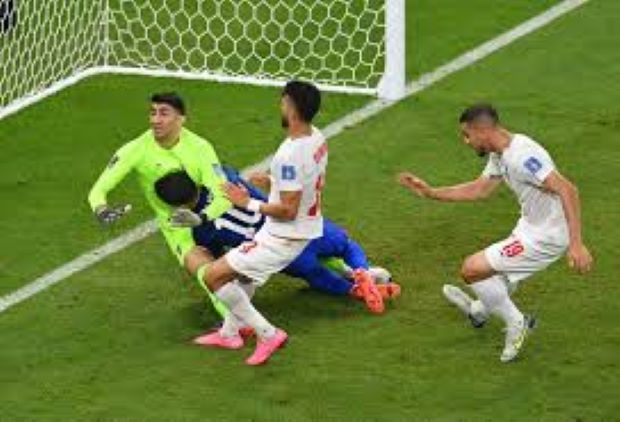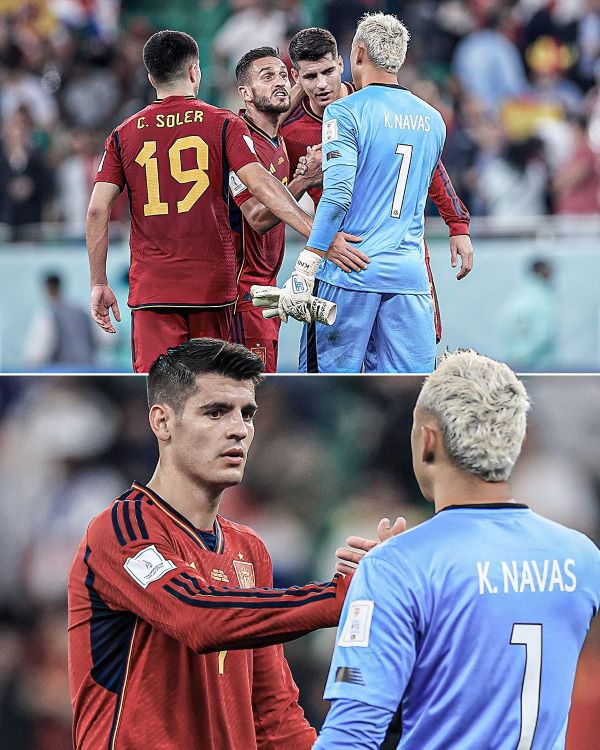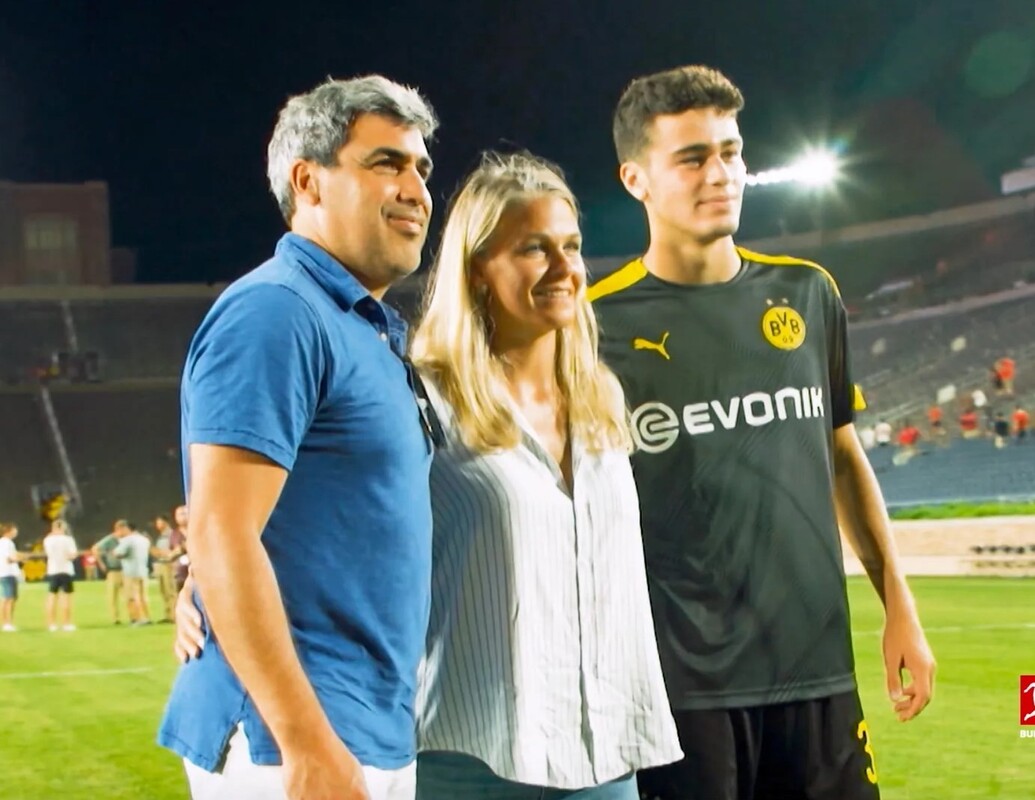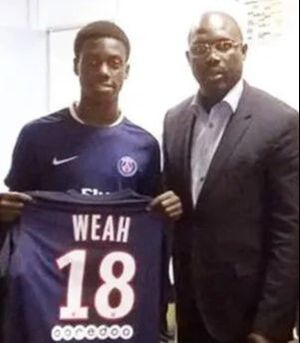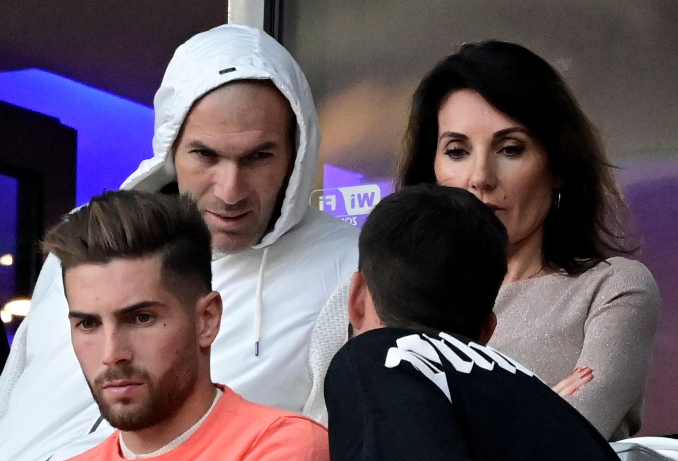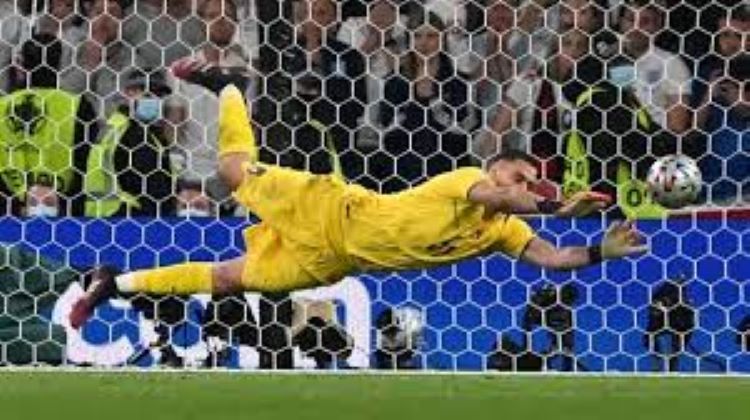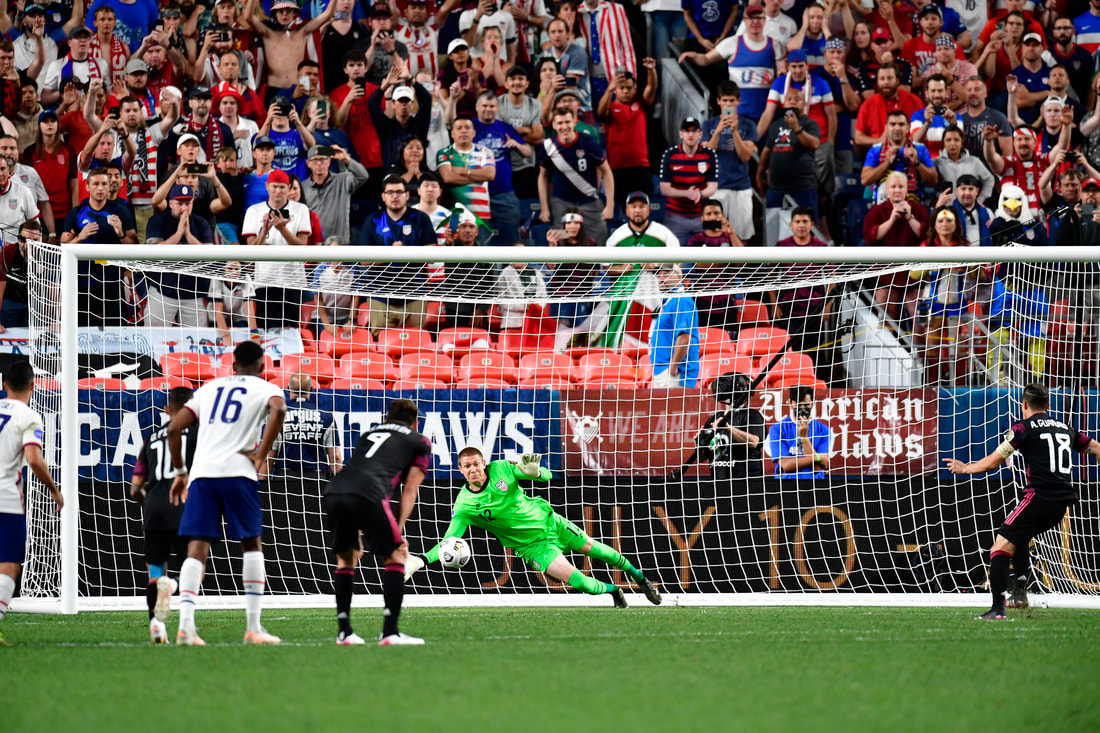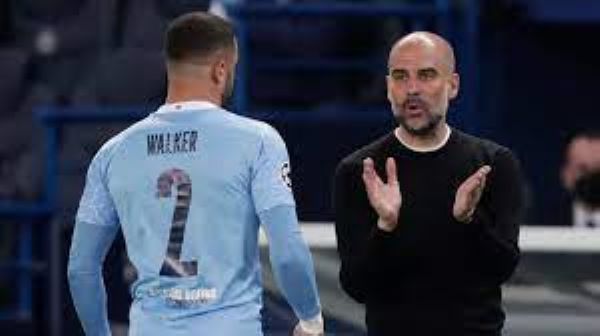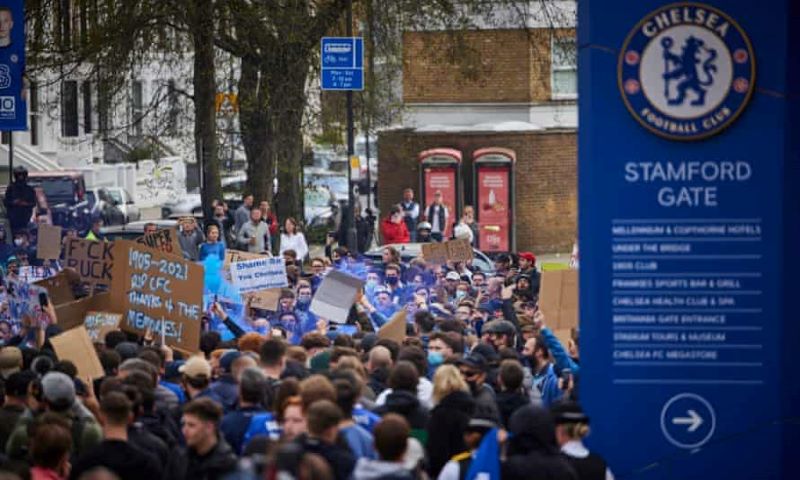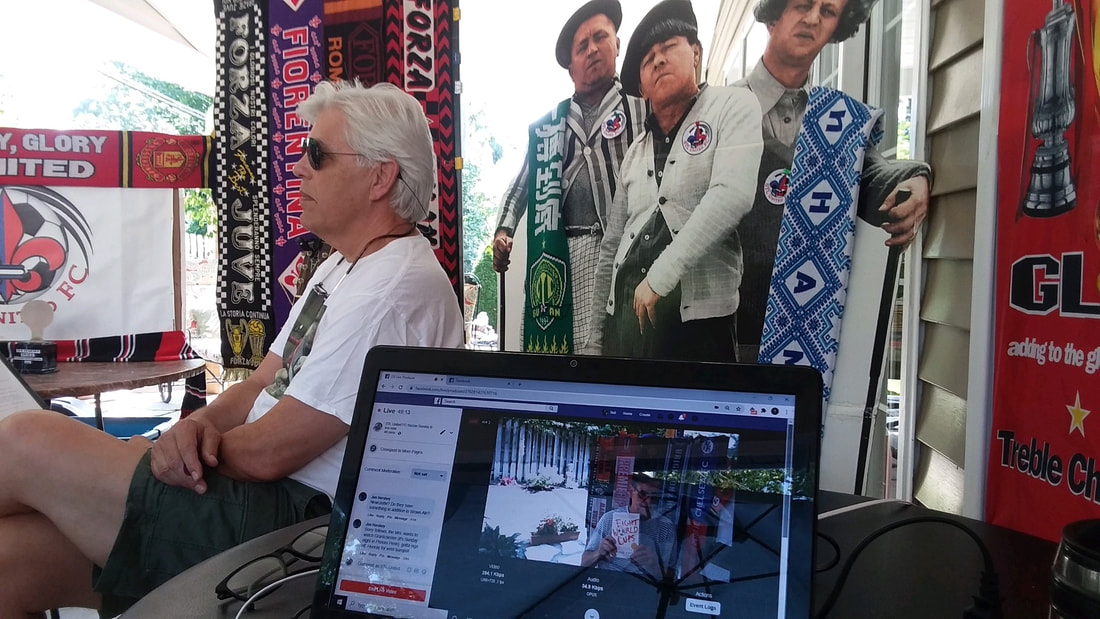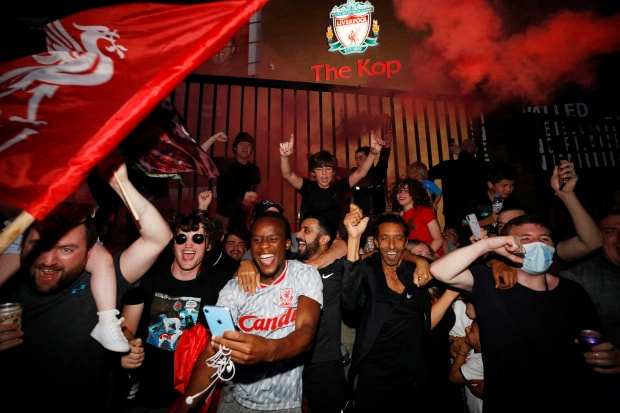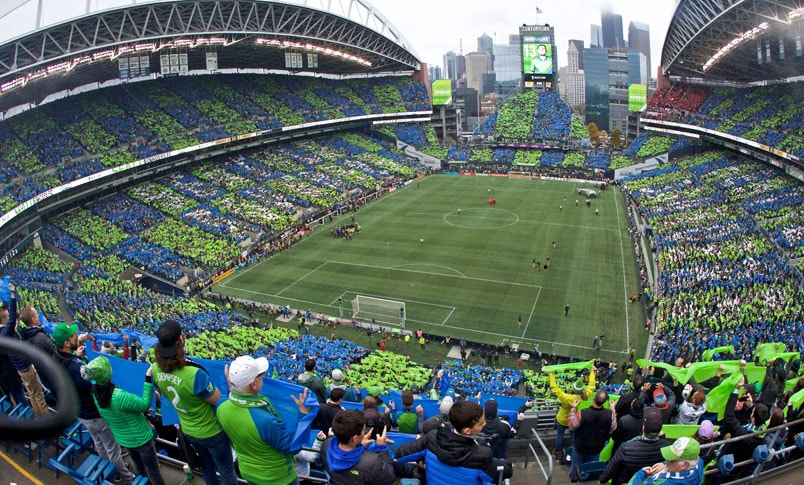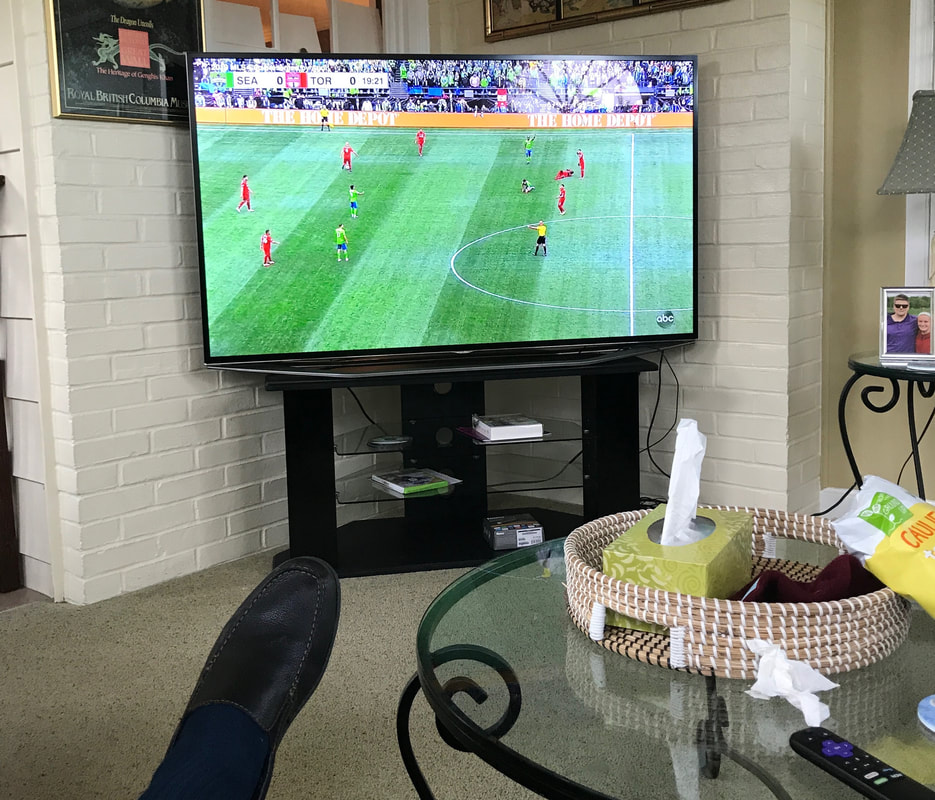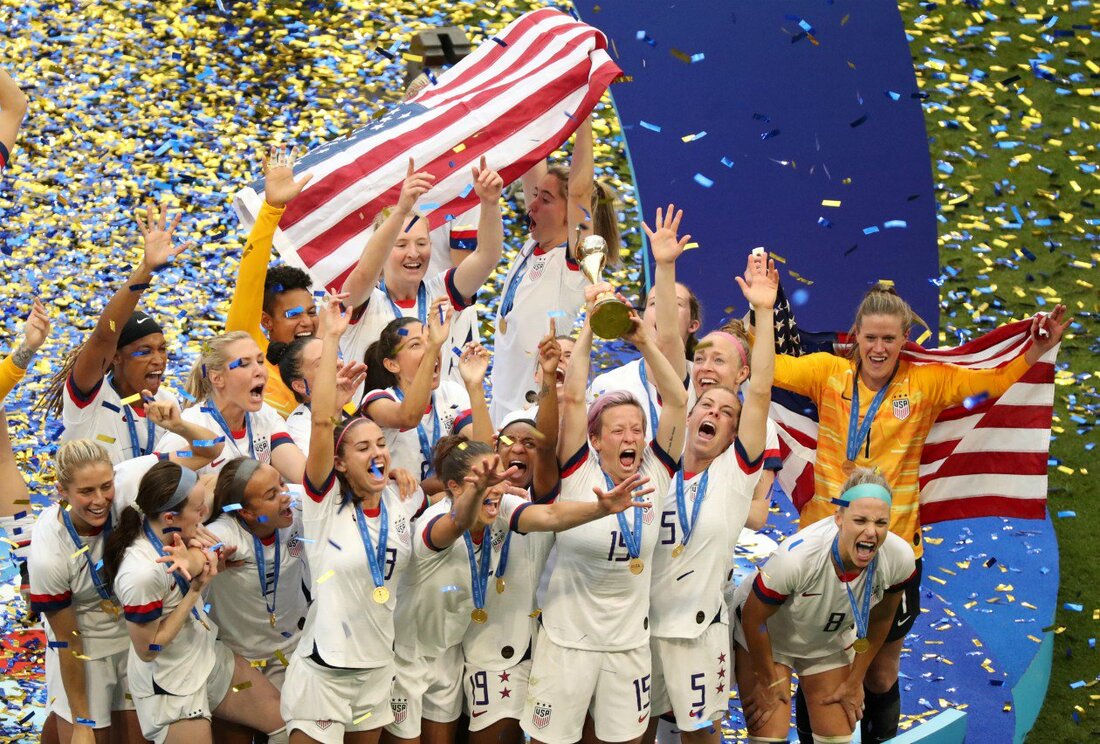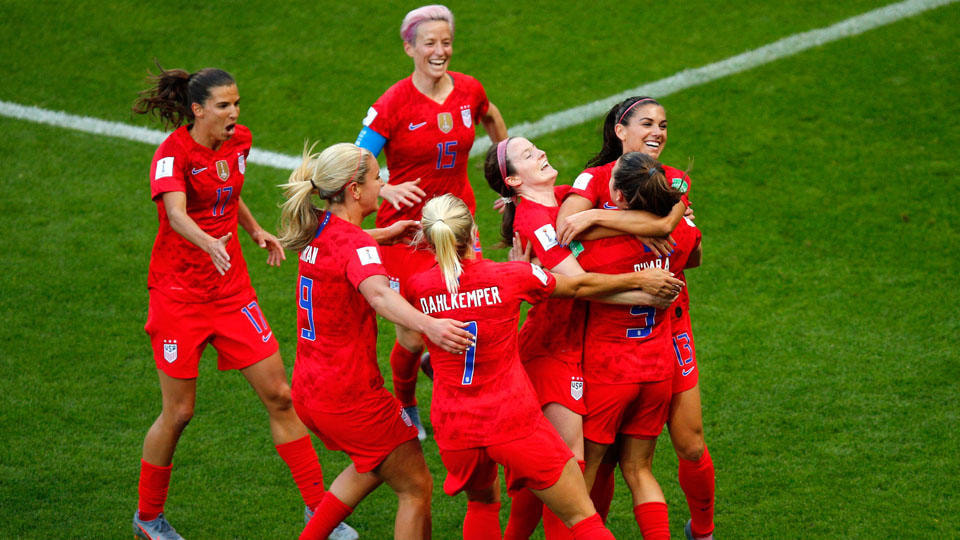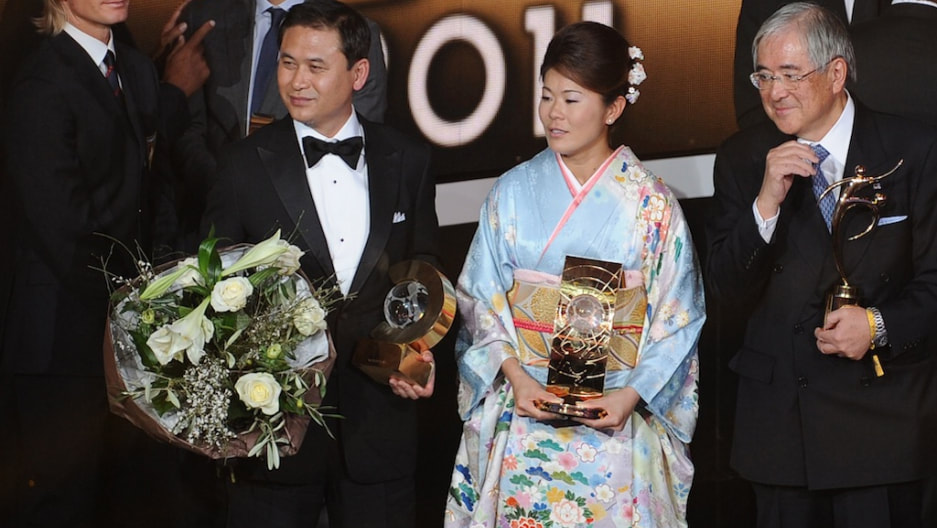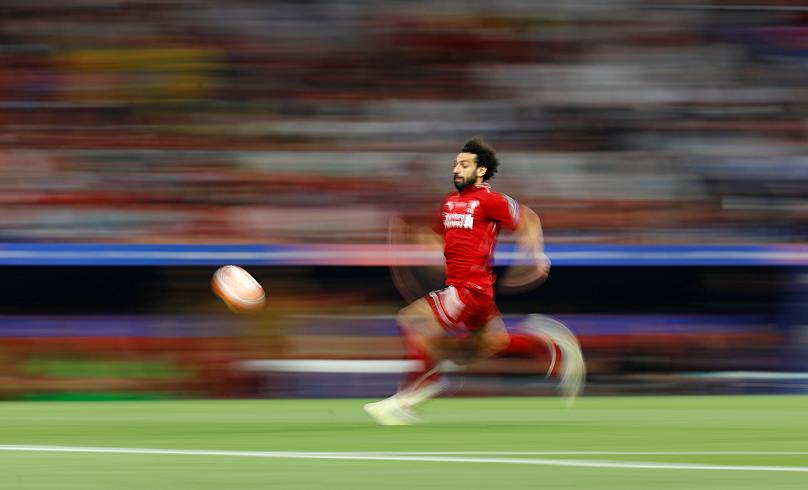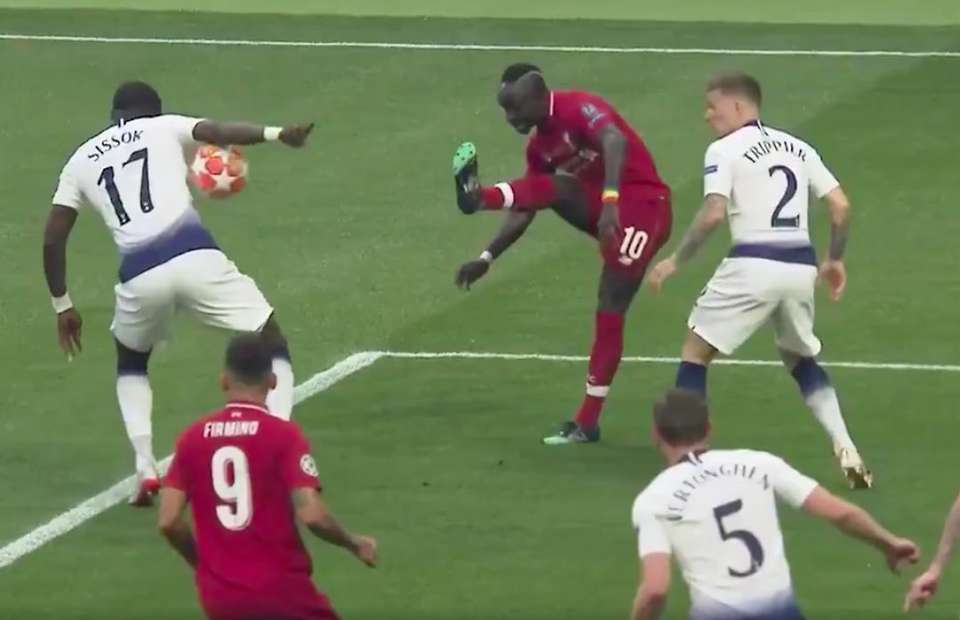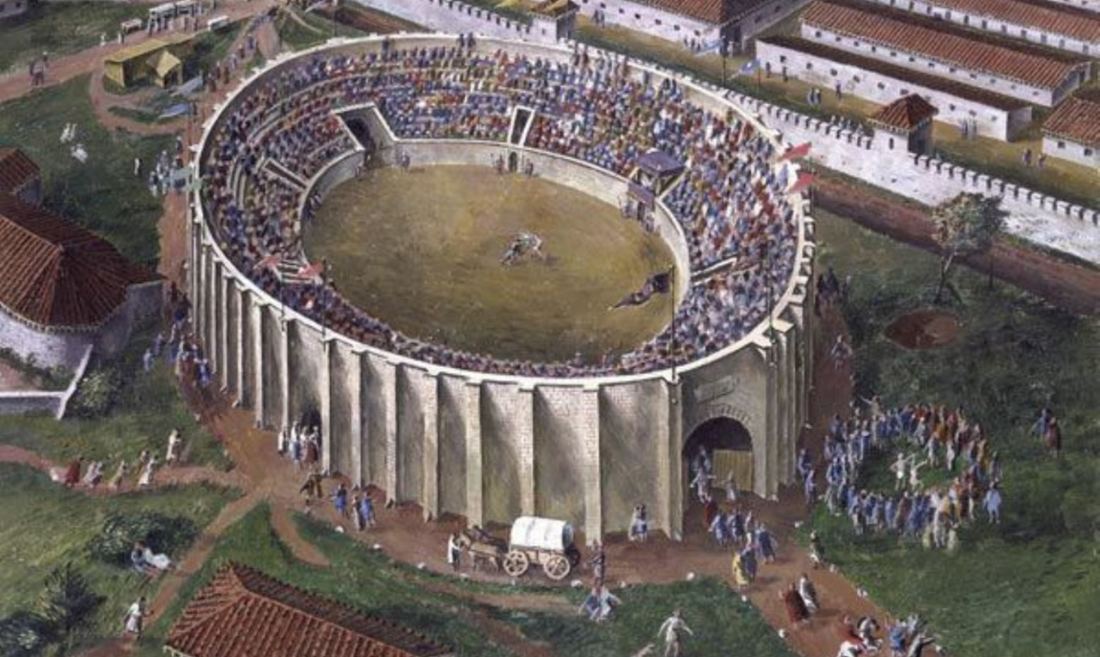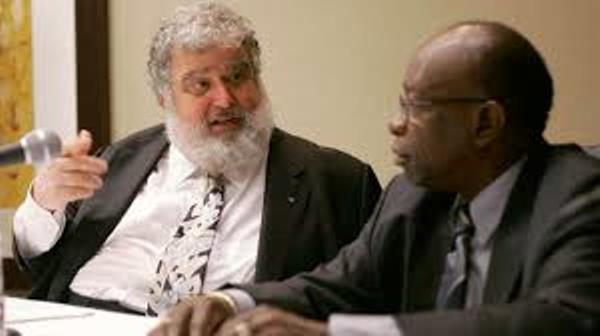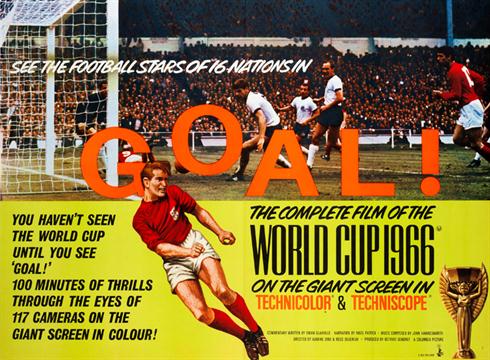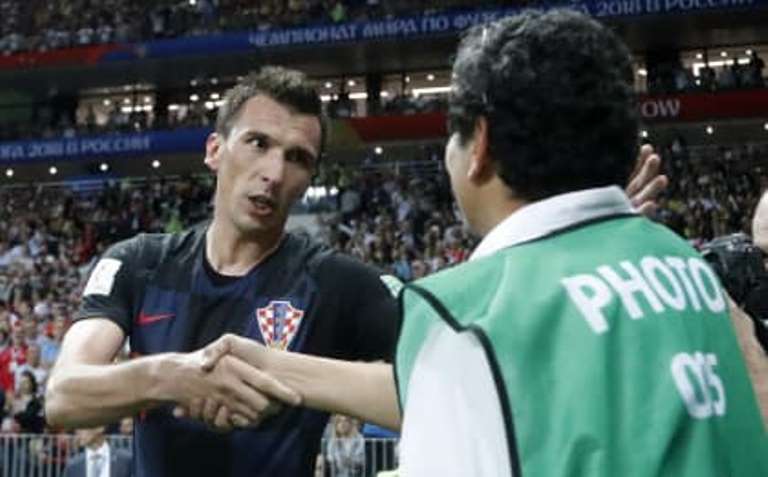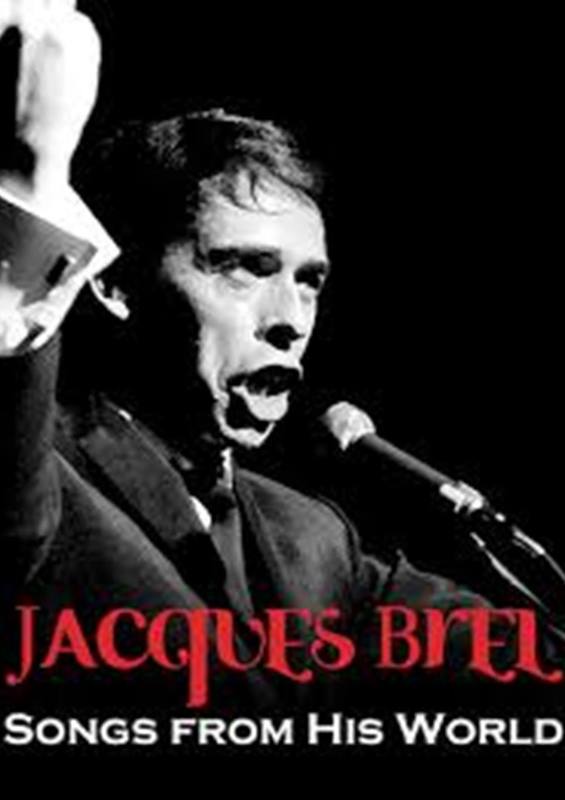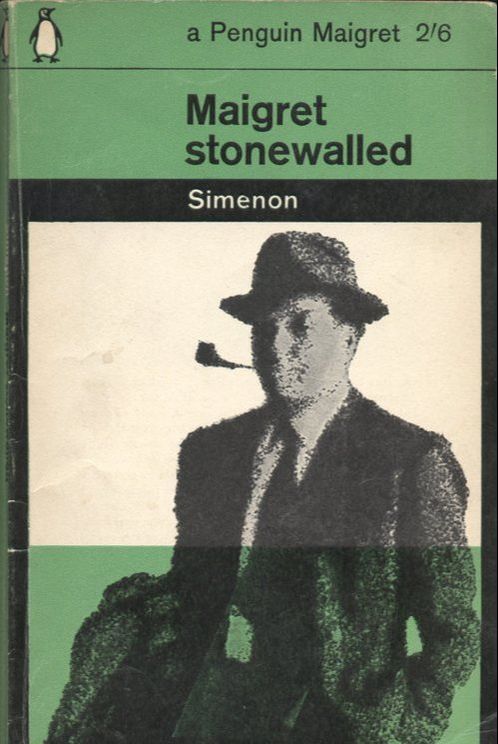|
The message came from a colleague in one of the danger spots in the world.
“I hope that you've got a column in you on Beckenbauer's passing. I'd love to read it.” Ummm, frankly, I had not thought of writing a word about the passing of Franz Beckenbauer, the great German soccer player, last Sunday. I figured the NYT had already mustered two of their surviving sports experts who produced a worldly obituary of the man known as “Der Kaiser.” Beckenbauer was “Der Kaiser” for his smooth play in winning a World Cup on the field in 1974 and another World Cup as the manager of the German team in 1990. I saw Beckenbauer glide serenely through his final years with the Cosmos in the strange new world. Like a lot of great world footballers at the end of their careers, he seemed to be in the U.S. for the money as well as the serenity of living relatively un-noticed in the streets and restaurants. Beckenbauer had a great rep for having played the 1970 World Cup semifinal with a dislocated collarbone (some reports say the collarbone was broken.) For his strange adventure in the U.S., he was surrounded by teammates who out-shone him in charisma – Pelé, just to drop a name, plus the rock-steady defender Carlos Alberto and the solipsistic striker Giorgio Chinaglia. Then Der Kaiser went home. In 1990, in Rome, I was impressed by Beckenbauer after winning the World Cup as German manager. He was giving a press conference at the front of the swarm of soccer scribes, and spotted Lawrie Mifflin of The New York Times, who had covered his Cosmos days. She was standing on a chair to ask a question, and Beckenbauer said, "Hello, Lawrie. How's New York?" The NYT obit by Rory Smith and Andrew Das more than handles the Beckenbauer career and his life, inevitably more complicated than 90 minutes on the pitch. The most impressive thing I know about Der Kaiser is that he was part of the classic Monty Python skit about the big match between philosophers – Greeks vs. Germans, three and a half minutes of inspired name-dropping and turgid pondering. Twenty-one famous philosophers and one footballer. Franz Beckenbauer – “a bit of a surprise,” emotes the classically British commentator. For laughs, the skit needed a famous footballer in the midst of the thumb-sucking, and it has Beckenbauer. ( I have consulted the Web and written to a couple of knowledgeable colleagues, but nothing suggests it was really Beckenbauer.) The point is, one suave sweeper gives a classy note to the big event. I don’t even know how the DVD found its way into our household, but I used to watch it whenever grandson George paid a visit, and we howled at the hapless posturing by men in robes, men in suits. Franz Beckenbauer’s greatest moment. What did he think of it? Wish I knew. *** Note to my pal in a danger spot: Hope this answers your question. Be safe. GV *** The NYT obit: https://www.nytimes.com/2024/01/08/world/europe/franz-beckenbauer-dead.html Bless its heart, Wiki has a lush section about the Philosophers’ match: https://en.wikipedia.org/wiki/The_Philosophers%27_Football_Match Finally, a kind word and a mature stance in the ugly standoff in American men’s soccer. Gio Reyna, all of 20 years old, has been chosen for the national squad in two matches later this month, as well he should have been. “As far as we’re concerned, Gio is a part of our program. He’s a good guy and a top talent and he is evaluated like any other player,” said Anthony Hudson, the interim coach of the national team. Reyna was the most controversial American player on the U.S. squad in the disappointing World Cup last fall. Apparently, he contributed to his bad standing by moping when thwarted. He is, did I mention, only 20. But the so-called adults and leaders came off worse. This is one of the saddest stories in the history of men’s soccer – involving two teammates from the 2002 team in South Korea that made the best standing ever by the U.S. in a World Cup. Claudio Reyna played the best match I ever saw from him on the national team – distributing the ball, holding the defense together from midfield. He was brilliant as the U.S. humbled Mexico – dos a cero -- in the round of 16. Gregg Berhalter nearly scored in the quarterfinal match against Germany, but a German defender just happened to stick his arm in the path of the close shot by the American defender. The referee ruled that the defender did not commit a hand-ball infraction – but several former German stars at the match later said the U.S. should have been awarded a penalty kick. (In his best Lawn Guyland sarcasm, American coach Bruce Arena grumped, “That’s nice.”) Reyna and Berhalter. Two decades later, Berhalter was the coach of the American World Cup squad in Qatar last fall, making the decisions, including telling young Gio Reyna, a promising player in the Bundesliga, that he was not likely to get much playing time because…because….well, it’s not clear. How to Lose a Promising Young Player, by Gregg Berhalter. Reyna has had injury issues, and apparently his attitude went downhill from there, and he played bits of two American matches. Meantime, his parents, Claudio Reyna and Danielle Egan Reyna, herself a former national player, were grumping in the stands, telling people they knew bad stuff about Gregg Berhalter, and if it ever got out…. What the Reynas knew was that when Berhalter was in college, he was dating Rosalind Santana, a member of the college women’s team, and the two 18-year-olds had an argument in a bar, and she slapped him, and he kicked her in the legs, and the brawl was broken up by a stranger. Berhalter told school officials, sought counselling, and the following fall Santana contacted Berhalter and they have been married for two decades. Berhalter’s judgment about Gio Reyna may have been questionable, given the young player’s swivel-hipped instincts in cutting through defenses. However, Berhalter’s judgment as a leader was even worse. After the World Cup, Berhalter was invited to speak in a private meeting of business people – officially off the record – and he discussed “leadership” decisions he had faced including a certain player who acted up during the World Cup. Needless to say, word got out. This is how to lose face with players, forever. Finally, finally, the so-called leadership of the U.S. Soccer Federation contacted a legal firm to investigate all aspects of the Reyna-Berhalter incident. The report came down this past week, finding no legal faults by anybody, leaving the decisions up to the federation. What should happen now? Berhalter is technically a candidate to regain the job. I can’t say I was impressed with his coaching during the World Cup mission, and in my opinion the blatant allusion to Gio Reyna in a business speech makes him a poor candidate for a second term. (His personal life, his marriage, an incident 20 years ago, is not an issue, as the legal report points out.) And what about Claudio and Danielle Reyna, who apparently were bad-mouthing Berhalter all over Qatar during the World Cup? Unhappy parents are part of every level of soccer, but I think Claudio Reyna, deservedly a member of American soccer hierarchy, had a responsibility to behave better. And then there is this: While Claudio was playing the best soccer of his career in the 2002 World Cup, Danielle Egan Reyna was a personable presence around the team hotel in Seoul, pregnant with their second child, who in November of that year would become Gio Reyna. Nearly a decade later, the Reynas’ first child, Jack, came down with a lethal form of brain cancer, glioblastoma, and he died in July of 2012. The other day, when the legal report came out, I went online and found a touching article about the Reynas’ terrible loss. I would suggest anybody should read this before forming an opinion about the Reynas – what they have been through, how they describe Jack, the ideal big brother for Gio and two subsequent children. Also, please note that this beautiful article was written by one of best writers ever to cover soccer, Grant Wahl, of Sports Illustrated. Last fall, during the World Cup in Qatar, Grant slumped over and died at his desk in the press tribune. https://www.si.com/soccer/2018/12/12/claudio-reyna-family-jack-death-giovanni-dortmund#gid=ci0254f6cdc0022511&pid=jack-reyna-giovanni-1jpg Part of Grant’s legacy is this description of the humanity of the Reyna family. Also, I would propose reading the words of the aforementioned Anthony Hudson the interim coach. He does not have a public reputation as player or coach, but he sounds like an adult who knows a thing or two about leadership, and that is no small thing. “We had the issue at the World Cup that we dealt with internally, that we dealt with as a group,” Hudson told Mike Woitalla of the valuable site, Soccer America, adding, “There was a positive response from Gio after that … and we all moved forward. “The World Cup ended, and beyond that it became a very, very, complex situation that we see as separate from Gio, even though he’s impacted by it. ... But as far as we’re concerned, Gio is a part of our program. He’s a good guy and a top talent and he is evaluated like any other player. We made the roster decisions based on what gives the team the best opportunity to win these games, and we brought him in because we think he can help us do that.” Gio will be with the U.S. squad in two Concacaf Nations League games at Grenada on March 24 and vs. El Salvador in Orlando March 27. After all that has happened, Gio Reyna deserves the chance to grow up, to go forward, to find open space, no matter who the coach is. ### THIS JUST IN: FRIDAY, MARCH 17 In Soccer America Daily, an article by Paul Kennedy, "Christian Pulisic backs Gregg Berhalter in face of 'childish' controversy." Pulisic, who has learned patience from his time with Chelsea, speaks positively about Gregg Berhalter's chance to return as coach: "Everything that happened with Gregg, first of all, has been handled in an extremely childish manner," Pulisic said. "I think we've seen what has been going on. I think it's childish, it's youth soccer, people complaining about playing time. I don't want to go too far into that, but I think Gregg has been extremely unfortunate to get into the position he's in now." https://www.socceramerica.com/publications/article/95566/christian-pulisic-backs-gregg-berhalter-in-face-of.html?edition=29569 The report commisioned by the US Soccer Federation:
https://ussoccer.app.box.com/s/ycsf3xneaqbph329kilqy5upmk45sotbussoccer.app.box.com/s/ycsf3xneaqbph329kilqy5upmk45sotb In his final hours, Grant Wahl wrote that he had been wrong. He had predicted that the Croatian star Luka Modric was too old at 37 to take the team any further, but after Croatia reached the semifinals on Friday, Grant wrote a mea culpa. Then he went on to write about the second World Cup quarterfinal of the day, and he died, at 48. The circumstances must be examined by American authorities. It’s way too easy for Elon Musk’s new toy to carry kneejerk claims that Grant Wahl was given the Khashoggi treatment, some kind of chemical bonesaw. But we don’t know, not yet. The New York Times and other responsible news agencies quickly examined Grant’s own recent articles mentioning his not feeling well in Qatar, and going to a clinic at the stadium, and he described how other journalists covering this marathon had the same symptoms, from long hours and work stress and crowded press rooms and Lord-knows what kind of travelling microbes. I’ve been there, done that, under the same conditions, during World Cups and other mass events. (More on that, below.)  Grant Wahl was one of the major journalists covering soccer, and had been right about so much, including the repressive air to this World Cup in Qatar, born from scandal – packets of $100 bills to delegates -- in the world soccer body, FIFA. One day at the World Cup, Grant wore a rainbow t-shirt, the universal symbol of support for gay rights, gay existence, and he was held by stadium police, until released. That takes courage. Most people learned after Grant’s death that the rainbow t-shirt was a tribute to his brother, Eric, who is gay. His brother linked the death to Grant’s speaking up for gays, and for thousands of itinerant laborers who have died building these pop-up stadiums in a country with enough money to buy FIFA, the most corrupt sports organization in the world. “They just don’t care,” Grant wrote about leaders of Qatar and FIFA. I read Grant’s posts from Qatar, on the personal website he was building after leaving Sports Illustrated during the ongoing pandemic. He was offering his experience and courage for paid subscriptions, but also made some free essays available. He was no home-bound typist – known as an Underwear Guy -- pecking away on a laptop. Grant Wahl was out there, fully credentialed, with the respect of the soccer community, and also with the eyes of the Qatar security force on him. In a very real sense, he was a lone wolf, existing on his own guts, his own instincts, his own strength, in a FIFA/Qatar environment that had no reason to like what he was typing. As soon as I heard about Grant’s death, I had a pang of déjà vu. I was also 48 during the 1986 World Cup in Mexico, a country I love, traveling to modern and hospitable cities, hundreds of miles apart. I stubbornly continued to jog at high altitude, taking in the bad air. After a few weeks, I was shot. Couldn’t sleep. Couldn’t move. Couldn’t think. Couldn’t type. Fortunately, my wife was with me, to witness that I was running down. I also had something Grant Wahl did not have these days – a home office. I called the NYT sports department and said I was dragging, and needed a day or three off, but my editors, my friends, Joe Vecchione and Lawrie Mifflin, agreed that I had another great assignment, the Goodwill Games in Moscow, coming up, and I needed to be strong for that. My editors told me to come home, see my doctor, and determine if I was strong enough to go back out to Moscow – which I was. One of the best assignments I’ve ever had. (Plus, my wife was with me, buying fresh vegetables and fruit at a farmer’s market in a nearby square.) I also had editors watching my back, whether as a news reporter or a sports columnist. To this day, even as a typist for my own Little Therapy Website, I consider every word, every opinion, from the vantage point of the great editors, who found mistakes, even reined me in sometimes, much as I griped. Journalism has its dangers. I’ve been sent to riots and shootouts and assassinations and coal-mine disasters where I had to be quick on my feet, but nothing like colleagues currently in brave, admirable Ukraine. Sometimes, “even in sports,” the hours, the travel, the diet, the microbes in crowds, can beat you down. We will learn more. What we know now is that Grant Wahl was doing his work, writing so well about a subject he loved, and he has passed, way too young. In the modest World Cup history of American men’s soccer*, there is always room for something new. This year’s memory may very well be how Christian Pulisic propelled (a) the ball and (b) himself into the goal for what became the only score as the U.S. beat Iran and advanced to the knockout round. Pulisic was hurt, barely hobbling off the field and going to the hospital rather than playing in the second half. The overnight word was that he had X-rays of the abdomen – no speculation about whether he would play again in this World Cup. For now, Pulisic’s turning himself into a human bowling ball could become the stuff of legends – Willis Reed hobbling onto the court just before the final game as the Knicks beat the Lakers in the 1970 NBA finals and Kirk Gibson limping up to pinch-hit a homer for the LA Dodgers in the 1988 World Series. Pulisic had been wearing a serene smile in the minutes before the match, as the American and Iran teams marched out for the ceremonial playing of the anthems. I have a theory about the new look on Pulisic, who has often been the captain, based on his many vital goals. Instead, Coach Gregg Berhalter chose Tyler Adams to be the captain in this World Cup. Adams, an active midfielder, has been the core of the team in these three games, showing up everywhere, a man on a mission. He also displayed a maturity worthy of a diplomat when lectured by an Iranian reporter in a press conference the other day, after some knuckleheads in the U.S. federation had altered a version of the Iranian flag, just what was needed in dicey times.) (The poor Iranian players had a hollow look to them, because of the political overtones back home, rumors that Iranian women were being photographed by their government for wearing western fan outfits in the stands. And later there were concerns the Iran loss could be turned into more unrest, perhaps even scapegoating the players.) By contrast, Pulisic’s relaxed demeanor was noticeable on tv – a major difference from the twitchy look he carries around with Chelsea, where he rarely gets to play much. In the first two games in Qatar, in his first World Cup, Pulisic set up the only American goal in the first game, but his play was spotty, and his corner kicks were ineffective. Had people been over-rating him? I began to wonder that myself. But in Tuesday' third game, Pulisic seemed more centered, getting in the right position to score the goal before crashing into the keeper and the ground. Pulisic’s goal came in the 38th minute, with 52 official minutes left, and an agonizing 9 more of extra time, with the TV reminding us, basically every minute, that the U.S. could advance only with a victory, not with a draw. In a simultaneous match, England was on its way to beating Wales, 3-0, which meant Iran could have advanced with a draw, whereas the U.S. could only advance with 3 points from a victory. The other American players saved the day in the steam bath in Qatar, with players on both sides limping from cramps as well as the normal knocks. The World Cup did not always hold simultaneous third games in each group. In the first World Cup I covered, 1982, West Germany and Austria played in Gijón, Spain, after Algeria’s match was over, and they knew a 1-0 victory by West Germany would allow both teams to advance, so they waltzed and they waltzed, thereby screwing Algeria. That 1-0 result is now known as the Disgrace of Gijón. The U.S. has had other operatic third matches in World Cup play. In 2002 in South Korea, they were drubbed, 3-1, by Poland but at the same time in another city, a referee doled out two red cards to Portugal, making it possible for the host team to advance, along with the Americans. "This is a very good day for U.S. soccer," said Brad Friedel, the American goalkeeper, who added: "This was also a very lucky day for U.S. soccer.” In 2010, the last of the eight World Cups I covered, the U.S. teetered into the third match with Algeria, needing a victory to advance. In the first minute of extra time, the U.S. staged a full-court break, with keeper Tim Howard heaving an outlet pass to Landon Donovan, who advanced the ball to Jozy Altidore who centered the ball to Clint Dempsey who banged a shot off the keeper, but Donovan followed the ball and scored the goal. Instant history. Now there is a new landmark – Christian Pulisic’s tumble into goalmouth, and into history, or at least into a match with the Netherlands on Saturday. (*--the American women won their championships early and often, and now other nations have caught up, and good for them.) *** (Below: Tyler Adams, U.S. Captain. Could be secretary of state. Check out his thoughtful longer version online.) Keylor Navas has probably never had a day as bad as Wednesday, in the World Cup, when he played goalkeeper for Costa Rica against Spain, and lost, 7-0.
Not much of it was Navas’ fault -- the ball kept coming at him from many angles – but a keeper always takes these things personally. Navas is no stranger to Spanish soccer. From 2010 to 2019, he played goalkeeper in Spain, most of it for Real Madrid, the perennial champ. Then he moved to Paris St-Germain, the powerhouse of France. Any soccer player in Spain knows Navas, or knows of him – a modest-looking bloke, with a silvery thatch of hair, who does not appear to be 6 feet, 1 inch tall, as listed. Near the end of the one-sided match, I hoped the tv camera would stay with Navas. I often think of the second World Cup I covered, in 1986, in Mexico, when Argentina and Italy met in the first round in Cuauhtemōc Stadium in Puebla – a nasty game between two masters of infighting. Yet at the end of a 1-1 draw, Diego Maradona of Argentina was hugged by many of the Italian players – a salute to his impact on the Napoli team in the Italian league. I witnessed a tactile camaraderie among highly-paid players on the two squads, who had been booting each other around all afternoon, and rolling around in gestures of mortal pain. On Wednesday, a knot of Spanish players immediately jogged over to the Costa Rica goal and hugged Navas or patted him. What they said was among them. But the body language showed their respect for his long career on European clubs and with the Costa Rica national team. It’s a lesson to fans in the stadium and watching on television. Athletes play hard, and sometimes it gets nasty, but when the whistle blows, quite often the respect is tangible. (Above: One of the greatest goals ever by the U.S., vs. Algeria, 2010, South Africa -- involving four epic players -- Howard, Donovan, Altidore and Dempsey.) -------------- The American men’s soccer team will play Wales on Monday in the World Cup, which comes around every four years. (The four-year gap is part of the charm of soccer, although the assorted reprobates who run world soccer hallucinate about a more frequent World Cup.) For the fast-growing multitude of Americans who love and understand soccer, the common wisdom used to be that as more young American prospects gravitated to the fast leagues of Europe, the U.S. national team would become a powerhouse. But right now, I’m not sure about 2022. As a witness to the great goal by Paul Caligiuri in Trinidad in 1989 that put the U.S. in the 1990 World Cup to the bravo defense by goalkeeper Tim Howard in the gallant loss to powerful Belgium in 2014, I saw a quarter century of mostly progress. National soccer teams are essentially all-star teams, recalled from clubs that provide large salaries and top-level experience. The best players are called up to the national squads, trying to shrug off jet lag and over-exertion in brutal club schedules. (Think of world soccer as an incessant giant hamster wheel.) The evidence of the past two years of qualifying matches is that the young American male players have been banged up in club play, and when put together they do not display enough stamina, cohesion and smarts. This was evident in the qualifying tournament for the 2018 World Cup, when all that American effort and money and talent came to a screaming halt. After six straight qualifications in the main World Cup, the U.S. was reduced to a raggle-taggle group of boy soldiers, sent into battle over their heads against regional opponents, ultimately pounding the scruffy turf in frustration after the loss in Trinidad. (Stuff happens. Italy – the Azzurri – four-time champions – will not be in Qatar, much to the mortification of the Italian tifosi including me.) The Americans did get through this time, but with a revolving roster of flashes and hopefuls, riddled by injuries, without a scintilla of consistency during the qualifying. Canada had a better cohesive team during qualifying. I don’t necessarily think any of this is the fault of Gregg Berhalter, the American coach, a fit and modern lifer who was almost a hero in the 2002 World Cup, except that a German defender managed to drop his arm in position to stop Berhalter’s up-close shot. Berhalter knows the game but he is banking on players who should be nearing the peak of their careers, like Christian Pulisic, who has not been getting enough time, on a fast Chelsea team. This accumulation of injuries and benchings and transfers lead to my conclusion that the best days of American soccer just might be – I hate to say this -- In the past. This nostalgia may sound familiar to New Yorkers, in particular -- Mets fans talking about Ron Swoboda’s catch in 1969 or Mookie Wilson’s glorious little dribbler in 1986, or Jets’ fans living off legends of Broadway Joe Namath winning the third Super Bowl back in, for goodness’ sakes, Super Bowl III in 1969. Soccer glory days include the goal by Joe Gaetjens, a Haitian national in looser eligibility times, helping the U.S. beat England – England! – in the 1950 World Cup. Then, after nine straight absences from the World Cup, the U.S. began a string of success, starting with a thumping shot by Caligiuri, one of the first Americans to get experience in Europe. But from 1989 through 2014, there were glorious moments. 1990, Italy - The U.S. played two stinkers, but in Rome, they almost beat Italy, except that Peter Vermes’ shot plunked off the Italian keeper’s posterior. 1994, USA – The Yanks qualified for the shootout round, but Tab Ramos had his eye socket fractured by a cheap-shot elbow, during a loss to Brazil. 1998, France– A total stinker, from coach to players. Don’t ask. 2002, South Korea – In the shootout round, the Yanks took apart Mexico -- dos a cero, now a legendary score in that rivalry – engineered by Manager Bruce Arena and wily midfielder Claudio Reyna. 2006, Germany -- Blood and three red cards and one of the best games ever by keeper Kasey Keller, in a draw with Italy. 2010, South Africa – Maybe the best single play ever in the U.S, modern era: Needing a goal to get past wily Algeria, the U.S. launched a desperate fast break, by some of the greatest players ever to represent the U.S. – keeper Tim Howard pitching out to Landon Donovan who dribbled and release a Maradona-esque pass to Jozy Altidore who centered the ball to Clint Dempsey, who banged a shot to the keeper, who deflected the shot to Donovan, who put in the rebound and set off the raucous dogpile on the field. 2014--- Tim Howard nearly beat Germany and Belgium, two of the best teams in the world. However, in 2018, the Yanks were clueless in the qualifying round, and happy talk commenced about the future. With all due respect, nobody on this team has done anything on the scope of a couple of dozen American stars of the golden quarter century, like Cobi Jones or Brian McBride or Eddie Pope, just to drop a few more stalwarts. One strength of the glory years was goalkeeping, a position dependent on athletic prowess, size and wingspan. Tony Meola had baseball offers, Kasey Keller had the fluid swagger of a shortstop or a tennis champ, Brad Friedel had an open offer to walk on to the great UCLA basketball squads, and Tim Howard was a known dunker in high school hoops in New Jersey. This year’s trio does not remind me of any of them. The field players are full of brilliance – but more potential than current. Pulisic carves up regional foes in qualifying but has been shunted in the best league in the world. Gio Reyna, injured much of this past season, has the most exquisite moves on the squad, a bit flashier than his dad, Claudio, who held the glory generation together. Another son-of is Tim Weah, whose father is George Weah, the greatest Liberian player, who never got to the World Cup, now the president of Liberia. Two top midfielders are Weston McKennie (Juventus, Italy) and Tyler Adams (Leeds, England). I enjoy watching Antonee Robinson (Fulham, England) a left back who was born and raised in Everton, England, and knows how to romp downfield. I also like Walker Zimmerman, from Major League Soccer, as a tall, rugged enforcer in the back. Two more names -- Brenden Aaronsen, a midfielder from Leeds, arms flying like a human windmill, a born disrupter, and in the midfield, and Kellyn Acosta, a veteran midfielder from the MLS, with a feel for unobtrusive aggression. Many players on the current American squad have more potential than the median of past U.S. World Cup squads. But as for the demands of this quadrennial spectacle, the most popular sports event in the world, this team has not done anything, yet. * * * FOOTNOTE FROM THE GREAT ROGER BENNETT, OF "MEN IN BLAZERS:"
One quick note: There is a lot of discussion about how we should not worry about this tournament because our squad is designed to peak in 2026. I want to go on the record and say just how much I hate that. World Cups come every four years. They are all too rare to waste. This is not an NFL team where you control draft picks, player development, and salary cap room. World Football is unpredictable. Injuries and form are uncontrollable. The World Cup is a gift. All of us are only gifted a handful of them in our lives. You go hard. You go now. Or you go home. Never write one off. Make memories while you can. Take nothing for granted. Savor every bloody second. (ALWAYS LISTEN TO ROGER--GV) https://mail.google.com/mail/u/0/#inbox/WhctKKXgtTcCXfnqkLtSGQKjcgQdDNtvtBxJpbVsvpvbBdncZmLzPkRTncKBXvCVZQxNkBQ The other day I was writing about Dominic DiSaia, and his photo of Vin Scully, and I mentioned photographers I ran around with, back in the day. One of them is John McDermott, who bonded with me on the soccer beat and also at the 1994 Winter Olympics in Norway. Speaking Italian fluently, John charmed our way into the Italian hospitality tent up on an icy mountain plateau, by offering some of my NYT souvenir pins (“distintivi”) -- pure gold at the Olympics. The food was great, as one might expect, and so was the scene when Alberto Tomba, three-time Olympic gold medal ski racer, slowly checked out every table, like an entitled don in one of the Coppola masterpieces. (Oh, yes, that was Roberto Baggio's voice on John’s cellphone.) John McDermott – originally from Philadelphia -- gets around; he loved San Francisco for decades, riding his bike and hanging around with locals like Dusty Baker, but six years ago he moved to Italy with his wife, Claudia Brose, originally from Cologne. They live in Appiano, in the northeast corner of Italy, where German and Italian intermingle, but lately the couple has been making forays to Naples for the ambiance. Claudia has a business conducting photography seminars, and John demonstrates the art of street photography in one of the most vital cities on earth. In Naples – Napoli --- English or northern RAI broadcast Italian only go so far, but in Napule life is often conducted in Neapolitan, not so much a dialect of Italian as a Romance language, endangered, to be sure, descended from Latin. John enclosed a link to a video he put together, using his photographs, backed up by the song by Pino Daniele raised in the Spaccanapoli district, who died in 2015. What draws John and Claudia back to Naples? "The warmth, energy and openness of the people, the chaos and the way everything just works out," John wrote the other day. I get it. My first foray to Naples was in 1970 when my wife and I took our three young children around Italy, the most child-friendly country I know. I went back in 1989 to work on a Times magazine feature on Diego Maradona, the Argentina soccer star who played for the Napoli club – a perfect spot for the flawed athlete. Maradona defied the club’s attempt to set up an interview, even when the club driver took my to Maradona’s villa at the top of the old Greek hill area, Posillipo. I called the number I had for him and somebody messed with my mind, leaping from Spanish to Italian and back. And when I went to a club practice Maradona did not show up that day, leaving his coach sputtering and fuming. Tough town. I realized this at the Napoli club match that Sunday. As I made my way to the press tribune, my guide nudged me under the overhang – just before a wadded cannonball of wet tissue splatted against the wall, like a baseball, where I had been standing. The “ultras” in the stands surely had good aim. Next time I visited Naples was at the 1990 World Cup when Argentina was defending its 1986 title. While I was working, my wife meandered down to the harbor, with life pulsing in the shops – at least until a couple of older ladies wagged index fingers and warned, “Signora, Signora,” and motioned for her to hide the bracelet on her wrist. The local lads were quite adept at snatching jewelry from tourists, they signalled. The pre-teens of Naples are known as “scugnizzi” – urchins – a matter of civic pride. Sit at an outdoor café and a scugnizzo will try to sell a few loose cigarettes, as a way of getting closer. Oh, yes, tough town. Maradona, local hero, played to the Napolitani by urging them to root for his Argentina team when it played Italy in the semifinal. His words, as John McDermott recalls them, were, “364 days a year they call you “terroni” -- an Italian pejorative term for southerners. “Today they want you to be Italian. Don’t be fooled by them. We are your team! You belong with us!” Maradona’s brazen appeal was rewarded with a victory over Italy, but Argentina lost the final to West Germany. He’s gone, now, a victim of his excesses, but Diego Armando Maradona is the flawed patron saint of Naples. As John and Claudia wander through the tangled, pungent streets, they see his likeness everywhere -- the man who found his spiritual home.  “It’s dirty and chaotic and sometimes nerve-wracking,” McDermott wrote me. “But it is also a constant, vibrant, non-stop show of real life lived out in public.”
John expands on his love for Naples in this link: https://aphotoeditor.com/2022/04/14/the-art-of-the-personal-project-john-mcdermott-2/ As I work my way through John’s photos, I can hear, can smell, and surely can see the pulsing life in the alleyways of Naples. *** Long live the photographers who take us to these places. *** The NYT – the former gray lady – now lavishes color photos on its subscribers. Did you see this recent masterpiece on Budapest? https://www.nytimes.com/2022/08/15/travel/budapest-hungary-memories.html Why can’t I commit? This is my dilemma, doctor, as a recovering sportswriter. Essentially, I root for four teams – the New York Mets, the two US national soccer teams, and also Italy’s soccer team, a passion going back to 1982, when Italy won.
(in 1998 in Aix-en-Province, I twitched my head so badly when Roberto Baggio hit the cross-bar against the French team, on a day off for me during the World Cup. “They’ll kill you,” my wife said, of the French patrons of the pub.) I know sports fans who need to have a team in every game they watch. Does it make the event more exciting? I don’t know. I do know that I could not crank up a favorite in the Champions League final between Real Madrid and Liverpool on Saturday. I had reasons to root for Liverpool. Me mum was born there, but throughout her long and educated life she had no interest – no knowledge, I suspect—of the Liverpool team. (“We were really from Southampton,” she would say. Her father was posted in Liverpool for a short time by the White Star Line, before moving to the States.) If I were going to root for Liverpool, it would be because of the informed passion of our oldest grandchild, named George, who has been storing up soccer details since he was 2 or 3 and he could beat me in the FIFA electronic game. A decade or so ago, George committed to Liverpool, and then he switched into an even higher gear when they acquired Mohamed Salah, the Egyptian will-of-the-wisp, one of the sweetest (is that even a soccer word?) athletes I have ever watched, almost a holy man. I tried to commit to Liverpool for the final, but I also have the strong memory of my college pal, Ward Wallace, who moved to Spain for a PR job in the mid-60s, As a business person in Madrid, he became a loyal fan of Real Madrid, the New York Yankees of Spanish football. Ward had season tickets to Bernabéu Stadium and eventually moved to a smaller flat right near the stadium. In 1991, he and I had an Italian lunch al fresco across the street from Bernabéu. Ward passed a few years ago, but his passion for Real has made it impossible for me to root for Barca or Atletico, etc. On Saturday, during the final, I daydreamed of all the Champions League finals I have seen, although never in person: the majority in L’Angolo, the wonderful and vanished bar on Houston St., run by Pino-from-Sicily. The games and years blur but I can see stirring rallies by Manchester United and AC Milan, in L’Angolo, in the company of soccer pals like Massimo and Ricardo and Logan and Denise. I’ve watched a final at the flat of Paul Gardner, who has taught me so much, along with our friend and colleague, Lawrie: I believe I’ve watched a final or three in the company of Lawrie and hubby Duncan-from-actual-Arsenal, and Roger-the-Chelsea fanatic. Most finals blur, but the best I ever saw was by Didier Drogba, who carried Chelsea on his broad back, playing the full field, offense and defense. In the time of Covid, I settled into the TV cave in our basement on Saturday, with grandson George texting me regularly, praising the new Liverpool weapon Luis Diaz. Meantime, I was caught up in my impressions of three decades of covering soccer: *-Carlo Ancelotti, now a venerated coach of Real, but in the 1990 World Cup in Italy, he was a heady midfielder for Italy with a constant smile, despite injuries. *-Thibaut Courtois, the Belgian keeper for Real Madrid, who always seemed a bit wooden to me when he played in England, but on Saturday he was stoically repelling shots by Liverpool – the Man of the Match, George and I agreed, even before the final whistle. *- Conversely, Mo Salah seemed to be trudging in mud, after a brutal schedule of national and club matches, a nearly criminal demand on these great players. “He needs the summer to recover,” my grandson texted. *- My neutrality remained steady, but a grand memory took over when the TV crew caught a glimpse of Zinedine Zidane, the French artiste who, in 1998, performed the best individual final I’ve ever seen – in this very stadium, Stade de France -- controlling the ball with his feet or gliding into the air for two, count ‘em, two header goals. My wife was there that day, because kind friends had a spare ticket, in the lower stands, with a great view of Zidane, as he floated. On Saturday, on the TV, there was Zidane, now a former Real Madrid coach. unable to hide his narrow marksman eyes inside a white hoodie, and accompanied by his striking wife, Véronique, a dancer and model. The camera did not linger long, but the sight of Zidane et femme seemed to call up the memories of 1998 – a grand omen for Real Madrid. -- Real Madrid did win, 1-0, as Vinicius Jr., flitted past Trent Alexander-Arnold, the wandering right back. “We go again next year,” my grandson texted. I was neither elated nor sad, because I did not have a team in this match, but I had watched some of the best players in the world. Was I missing something by not having a team? I really do not know. The Euro final lived up to the morbid expectations of half the participants. Italy conquered its shootout demons, aided by a keeper, only 22 years old, who most closely resembles massive dinosaurs that roamed the earth eons ago. England lost the shootout, after a 1-1 draw in 120 minutes of play, giving the nation another year, another generation, to talk about the lads from West Ham who beat the West Germans in 1966. Italy, known for its dogged tactics, that include Giorgio Chiellini smiling and chatting up opponents, was consistent with its repuation, as Chiellini tried to yank an English arm out of its socket. Unknown to much of the soccer world before this month, Gianluigi Donnarumma revised memories of hallowed keepers Dino Zoff, Walter Zenga and the retired anthem-bellowing keeper Gigi Buffon. Now there’s another one. While England broods over the Euro tournament, like patrons of some national pub, fans will surely question the tactics of manager Gareth Southgate, who missed a penalty himself, as England lost the 1996 Euro final. Having had 25 years to think about it, Southgate inserted two subs near the end of 120 minutes – so they would help win the shootout, if you follow that reasoning. What really bothers me is that one of them, Marcus Rashford, has helped raise millions of dollars to fight hunger. He is 23 years old and plays for Manchester United, and could easily be focusing on accumulating sports cars, but instead he raises money for the poor. I’m sure this admirable young man wanted to be used in the match, but the manager was saving him and Bukayo Saka of Arsenal, who turns 20 on Sept. 5, for penalty kicks. Both are Black; did I mention that? And while Southgate was consoling them on the field, the sneaks and cowards of the “social” media were making racial comments about the two late subs. So now that’s part of the legend, part of the complex. * * * In my earlier post, I wrote about old failures that haunt ancient soccer dynasties. Italy and England, two nations with a toxic mix of entitlement and disillusionment, will meet Sunday in the finals of the Euros, the second best soccer tournament in the world.* Fans of both countries can recite the failures, going back decades, with more facility than they can recall all the triumphs. Italy has won four World Cups and the first Euro tournament, but the nation has a long case of ansia from every missed penalty kick in between – sturdy Captain Franco Baresi and creative Roberto Baggio, both suffering on bad legs, bravely taking PKs in the 1994 final -- and missing. It never goes away. But England. Oy. England is riding a streak of 54 years without winning either of these tournaments. Yet England dared to adopt as its theme song for the 2018 World Cup a ditty called “Football’s Coming Home,” and then England lost in the semifinals to Croatia, and France won the World Cup. France! These years of English failure were recited, over and over again on Sunday by the ESPN broadcasting crew, Ian Darke (born in Portsmouth, UK) and Stewart Robson (born in Billericay, UK). I don't detect blatant rooting, like homer baseball broadcasters, urging “us” to score a few runs. No, they knew their stuff about all the heinous moments in the past 54 years for the English side, and I don’t blame them for reciting the disasters for the folks watching ESPN. They were telling true stories. Because American and English people share a common language, more or less, we Yanks have accepted English accents (whether or not Prof. Henry Higgins would approve of them) as the true soul of soccer. To be fair, England is given credit as the modern home of the ancient sport of kicking stuff around – British sailors and workers bringing the game to the ports of South America, in the second half of the 19th Century, etc. etc. Every year, every tournament, since 1966 looms even darker because of the wonderful event – England’s overtime victory over West Germany in the finals – at Wembley, the national stadium. That match is probably the best-known in history because it is represented in the best sports documentary I have ever seen – “Goal!” written by Brian Glanville. If an event like this can happen, English soccer must be the truth north of the sport, or so the theory goes. England turns out to be the victim in two of the most famous plays in soccer history, at the 1986 World Cup in Mexico, when stumpy Diego Armando Maradona of Argentina elevated himself to the height of Peter Shilton, the English keeper, and obviously punched the ball into the net, stunning the incompetent ref into inaction. Nowadays, such villainy is detected by the official camera -- plus, goalkeepers tend to punch out the lights of an opponent who flies into their air space. In that very same match in 1986, Maradona ran rings around all 11 defenders, or so it seemed, for the most circuitous and artistic goal in World Cup history. Want more suffering? In 1998, in France, David Beckham, the matinee idol of England, was jostled by Argentina defender Diego Simeone, and flailed a leg at Simeone, who writhed, in apparent mortal pain, and the ref displayed a red card to Beckham, and Argentina advanced and England went home. Every generation, England has its potential saviours -- Gary Lineker in 1990, and scamps who never quite made it happen like Wayne Rooney and Paul Gascoigne, known as Gazza. Nowadays, English soccer has been upgraded from competition with wealthy European national leagues, as well as recruited talent from Latin America and Africa and nowadays even that longtime soccer wasteland, the United States. And get this: the sparkplug for England on Wednesday was named Raheem -- Raheem Sterling. When I started watching world soccer, England's squad used to look like a Republican Party donors' picnic. All those white lads would dump the ball downfield and hope something happened. As Wednesday’s match went into overtime, the broadcasters quite accurately recited, “just as it was in 1966!” As England won in a penalty shootout, the broadcasters talked about “England’s tortuous history.” I almost felt sorry for English soccer – and I am a Mets fan since 1962. At least the Amazing Metsies have won two World Series. Many Americans in my generation learned about soccer from my good friend Paul Gardner, a son of England, who came to America and wrote and broadcast about the sport he called “soccer,” not “football,” and he spoke of “zero-zero,” not “nil-nil,” to avoid sounding pretentious to the American ear. Andres Cantor, from Argentina, is known for his ululating “Gooooool!” call, but as a long-time resident of the U.S., he informs but never patronizes. It would be great to have more “experts” in the U.S. with a broader, non-English viewpoint -- let's say an Italian bemoaning the missed penalty kicks over the eons or a Portuguese “expert” who can describe the drubbing inflicted on the great Eusebio in 1966 or a Brazilian who can discuss with passion the best team that ever participated in a World Cup – but neglected to win it, as beautiful Brazil did in 1982, while Italy purloined the World Cup with raffish zest. As I have written in my book "Eight World Cups," that first World Cup made me an Azzurri fan for life. I got to interview Dino Zoff, the venerable keeper, and later met Claudio Gentile, who had beaten the daylights out of Maradona in 1982. I used to watch Serie A on some wavy-line TV channel in New York City, and a decade ago I met Gigi Buffon and Alessandro Del Piero (currently doing studio babble for ESPN) when Juventus paid a summer visit to the Stati Uniti. Del Piero told me, in English, "Your Italian better than my English" -- clear flattery, but charming nonetheless. Yes, yes, I know, me mum was born in Liverpool, and spoke with English inflections for all her long and admirable life. Yes, I am proud of how the U.S. has, finally, developed world-level talent. But to this day, I love to watch the Italian players belt out the lyrics to the anthem, “Song of the Italians.” Long-time keeper Buffon is now retired but the Italians have another leader, Giorgio Chiellini, (with Buffon, above), who has the wrinkles of athletic old age and roars out the anthem, and jokes with opponents -- until the ref is not looking and he whacks and trips his opponents. Yes, these have been terrible decades for sad, deprived Italy and England. Now they will meet in Sunday’s final at Wembley. Somebody will lose, and that nation will say: “Naturally.” Somebody will win, and that nation will say: “Finally.” * * * *- The best tournament, of course, is the World Cup. The third best is the Copa América, which held a dream final Saturday at Rio’s famous Maracana Stadium, with Lionel Messi's Argentina beating between Neymar’s Brazil, 1-0. * * * (Complexes and failures aside, I am hooked on this video depiction of loyal, eccentric England fans; on Wednesday at kickoff, my pal Duncan-from-Arsenal sent me a terse email that said in its entirety: "Meat Pie." Do watch it.) Yes, yes, I know. I grew up (and suffered) when the Brooklyn Dodgers lived in the same town as the New York Giants and Yankees. (Bobby Thomson! Yogi Berra!) But that’s long gone.
I know all about the long Yankee-Red Sox rivalry, and the great football and basketball and hockey rivalries. I covered Ohio State-Michigan football back in the day, and the glorious Lakers-Celtics finals in the mid-80s and Islanders-Rangers (The organ and the Potvin Chant in the Garden!) But nothing is like Mexico-USA in soccer, for sheer nastiness, in a sport based on precious goals – and fueled by long-held stereotypes and resentments. History lesson: you cannot be casual against the Mexicans. Planted in their memories is a computer chip from 1847 when Gen. Winfield Scott marched his troops from Vera Cruz to Mexico City. (“From the Halls of Montezuma….”) The two squads had another episode of their rivalry Sunday night in Denver, in the finals of a regional tournament called the Nations Cup. There were homophobic chants, apparently now a staple of Mexican “fans,” plus bottles and other stuff flying out of the stands, one hard object conking Gio Reyna, the 18-year-old wonderboy who had scored the first restorative goal for the U.S. ( Apparently, he is okay.) All that stuff is deplorable, but the rivalry, the history, this great sport itself, is compelling. It held me for three hours in front of the tube Sunday night, watching the US rally twice for a 3-2 victory with repeated and late heroics. The Mexican players are always fired up; sometimes the U.S. players need a reminder. At 60 seconds, an American defender made a super-cool pass to his right to clear the ball from goal mouth, but the Mexicans were in predatory gear and poached the pass for a goal, making the evening seem disastrous. Hard lesson: You cannot be casual against Mexico, which has world-level talent, polished in some of the best leagues in Europe. The U.S. is just catching up. Never forget. Three American former players in the pre-game TV booth remembered that lesson. In 2009, in a qualifying game for the World Cup, in that ominous, rumbling torture chamber known as Estadio Azteca, Charlie Davies scored against Mexico in only the 9th minute, and tore off toward the stands to exult, wherever American fans happened to be. “See you later!” recalled Clint Dempsey and Oguchi Onyewu, his boothmates, two older players who also were on that field in 2009. They watched the talented, exuberant and innocent Davies strut into a barrage of debris from Mexican fans and quickly seek the safety of midfield. (Oh, yes, Mexico rallied for a 2-1 victory in front of the home crowd that night. Tough place. I remember one U.S. match in Azteca, 2001, when the U.S. bus parked in a so-called secure area, only to be harassed by a lone heckler – a borracho, a drunk, a dwarf on a carpeted skateboard, given the run of the lot, rattling off Spanish and English maledictions at the visitors: Bienvenido a Azteca. Every moment on the field is a battle. Personal. On Sunday, after a Mexican goal was disallowed because of a minimal offsides violation, Reyna, only 18, scored the equalizer in the 27th minute. In the stands, his parents, Claudio Reyna and Danielle Egan Reyna, both former American players, celebrated. I immediately flashed back to the best game I ever saw cool, selfless Claudio play, in the round of 16 in the 2002 World Cup in Jeonju, South Korea. He distributed the ball and defended and overtly set the tone for a 2-0 victory – also the best game I have ever seen the U.S. play, knocking out their rivals and moving into the quarters where they would lose, controversially, to Germany. (That score was familiar, from a World Cup qualifier in a storm with wind and rain and evil greenish clouds, in Columbus, Ohio, in 2001, soon prompting a chant: “dos a cero!”) There were three other dos-a-cero American victories in that decade. Sunday night’s game was not 2-0. Mexico scored and Gio Reyna tied it. The American keeper, Zack Steffen, went out with a knee injury in the 69th minute, and his replacement, Ethan Horvath, hastily warmed up, getting more action than Steffen had, and responding marvelously. Late in the overtime, two Mexicans put the squeeze on Christian Pulisic, the aging wonderboy, now all of 22, who went down, and drew the penalty kick. Pulisic coolly placed the ball in the upper-right corner (“where the spiders play,” said one of the American ex-players in the booth). Some Mexican fans promptly unleashed a homophobic chant – against nobody in particular – and the regional officials threatened to halt the match and replay it Monday behind closed doors. (NB: most of the Mexico fans, many residing in the U.S., are sportsmanlike.) “Bonkers,” was the perfect description of the mood swings, by my friend Steven Goff, longtime soccer correspondent for the Washington Post. In the closing moments, Horvath had to defend a penalty kick by the venerable Mexican captain, Andres Guardado, just off the bench, and he dove to his right to punch away the shot for the victory. Later, as quoted by my man Goff, Horvath said he had been well prepared for tendencies during the week by his goalkeeper coach, using films from other Mexican matches. (My long-time colleague, Mike Woitalla of Soccer America, rated Horvath a 9/10 for his spontaneous heroics. Reyna and Pulisic were rated at 8/10.) The U.S. celebrated – mostly toward the center of the field. Always a good idea. But the giddiness will fade quickly: Mexico still holds a series lead of 36 victories, 16 draws and 20 losses – and keeps producing talent. (I was struck, particularly, by the skill and gall of Diego Lainez, all 128 pounds of him, three days short of 21, who plays for Real Betis in La Liga of Spain. Mexico could afford to save him for the 78th minute; he did not score until the 79th minute, and spent his spare time lobbying the field official.) The rivals are probably fated to meet again in the qualifying stages for the 2022 World Cup in Qatar. Whenever they meet, there will be epic plays and mistakes and oaths and missiles from the stands, as well as moments of world-level soccer skills. For me, whenever the two squads meet, in a “friendly” or a World Cup match, it’s the best rivalry in North America. *** Try to access my NYT article from 2001, from the testing grounds of Azteca: https://www.nytimes.com/2001/07/01/sports/sports-of-the-times-the-yanks-reach-for-new-heights-at-an-old-altitude.html See if you can access the wrapup via that great asset, Soccer America: https://www.socceramerica.com/ Ditto, the Goff article in the WaPo: https://www.washingtonpost.com/sports/2021/06/07/usmnt-wins-mexico-nations-league/ Wikipedia has all the details of the Mexico-USA rivalry: https://en.wikipedia.org/wiki/Mexico%E2%80%93United_States_soccer_rivalry Pep Guardiola has had a great week. Fresh from his blazing show of independence against the owners’ assault on soccer, Guardiola sent his Manchester City team into Paris on Wednesday and beat PSG, 2-1, in the first leg of the Champions League semifinal. Two goals and a victory give Man City a huge advantage going into next week’s return leg in Manchester. And the away victory just may be a karmic reward for Guardiola’ criticism of the owners’ grab for a separate, elite season-long “Super League.” “It is not sport if you cannot lose,” Guardiola said last week, when the owners announced their own closed league. The owners – including three Americans -- would have threatened old rivalries and done away with relegation and promotion, the deliciously cruel system of the European leagues. However, fans took to the barricades, many players spoke out, and even a highly successful manager, Josep Guardiola i Sala, led the voices from the sideline. Perhaps he comes by his own sense of justice through being a proud Catalan, whose family still lives in Santpedor, two hours north of Barcelona, and speaks the Catalan language in their home. Guardiola has played for Spain during his grand career as a defender but never lost sight of the Catalan goal of total independence. After winning two Champions League club titles with Barcelona, he took the challenge of raising Manchester City to something more than the subservient club in Manchester and in the Premiership in England. Guardiola is one of those soccer lifers who accumulate languages and knowledge as they move from club to club, from nation to nation – like Vincent Kompany, former Man City captain, now managing Anderlecht in his native Belgium, or Lilan Thuram, originally from Guadalupe, championship defender for France and longtime staple in Serie A of Italy, or Peter Cech, longtime keeper for the Czech Republic and Chelsea and Arsenal, who is said to speak seven languages fluently and four or five others partially. Even though the world soccer system scoops up talented children into “academies,” essentially making a college education impossible, players like these (and Roberto Baggio of Italy, I just thought about him), manage to learn and grow and often speak out against injustices. Pep Guardiola has been an admirable figure since his playing days, and it was not a total surprise that he voiced his criticism of predatory owners, who include the potentate of Man City, Sheikh Mansour bin Zayed of the United Arab Emirates. Guardiola’s idealistic stance is relevant as his club tries to win what the Man City owners would have intentionally and selfishly tried to devaluate. *** The wrapup of Man City's victory on Wednesday: https://www.bbc.com/sport/football/56880443 Guardiola's remark in context after the owners declared war on the Champions League: https://www.nytimes.com/2021/04/22/sports/soccer/super-league-soccer.html A good profile of Josep Guardiola i Sala: https://www.nytimes.com/2016/10/19/sports/soccer/pep-guardiola-manchester-city-mexico.html INFORMED ESSAY ON THE OWNERS' PLAN  The old Arsenal stadium at Highbury, in a time when everything was black and white. Later, billionaires bought into the tradition, in order to make more money, The old Arsenal stadium at Highbury, in a time when everything was black and white. Later, billionaires bought into the tradition, in order to make more money, (From GV: My friend Duncan Irving is an Arsenal fan – family members back home worked in the actual arsenal – and he has written for Soccer America and The New York Times. He now lives in Brooklyn, and tends to see soccer through a double prism, as shown in his essay here.)
By Duncan Irving As soon as the European Soccer League was announced on TV last Sunday — just as Arsenal bundled a 96th-minute equalizer over the line against relegation fodder Fulham to cement the Gunners’ position among the European Elite — I turned to my wife and said, “Well, that’ll never happen.” And thankfully, I was right. This time. Sure, I could see the appeal of a European Super League to the club bosses. The Americans at Liverpool, Man U and Arsenal have long been skittish about relegation and the revenue losses they’d incur in the highly unlikely event they went down. Why not just eliminate the risk, once and for all? After a year-long pandemic, and even longer periods of mismanagement, Barcelona and Real Madrid badly needed the cash (Spurs, too, with a spanking new state-of-the-art stadium sitting empty) and the ESL offered a healthy instant injection of funds. I’m guessing Chelsea and Manchester City, owned by an oligarch and a nation-state respectively, went along with it because they didn’t want to be left out. It wasn’t surprising that they were the first two to bail. Still it’s been hilarious to hear the EPL and UEFA work themselves into a state of high dudgeon about all this, particularly as they've employed strong-arm tactics themselves in the past. And it’s also curious to see the likes of Gary Neville and Jamie Carragher frothing indignantly away behind the very costly SkyTV paywall, a network that thinks nothing of scheduling games at the most inconvenient times, with nary a thought to the fans they purport to love so much. And when you cede the moral high ground to the likes of Jeff Bezos and Boris Johnson … you know you’ve screwed the pooch. I’ll give a little credit here to Tottenham chairman Daniel Levy, who took advantage of the astonishingly bad publicity to dump his own festering pile of bad news, Jose Mourinho, and nobody batted an eyelid. Well played, sir! I’m not sure what kinds of sanctions UEFA and the leagues can put in place, because sadly the EPL and UEFA need those clubs more than the clubs need them. Three of the four entrants in the CL semis are ESL renegades, as are two of the four in the Europa League. I’ve watched some real sludge from my Thursday night Europa League follies these past few seasons, and it’s painfully evident that they need those teams. Same with the Premier League, which chucks up an outlier — Blackburn, Leicester — maybe once a decade. They also know that fans won’t watch a diet of (pundits always toss this fixture out as an example of one to avoid) Crystal Palace vs Burnley, indefinitely. Why was I so convinced that this idea was a non-starter? Firstly, my natural pessimism as an English-born fan. Soccer is a game predicated on failure. At the end of every season, there are a handful of winners (if we’re lucky) and a whole lot of losers. And as American sports writers (notably never George) loved to tell us, there wasn’t enough scoring in soccer. As fans, we thrive in gloom culture. There’s nothing quite like the gallows humor surrounding a club when it’s performing poorly. And it’s offset by those rare occasions when everything falls into place, and with it comes the release of tension and emotion we experience when a goal is scored, or our team wins a game it really doesn’t have any business doing. The specter of relegation is something that hangs over most teams, a kind of bogeyman of failure. And also, as fans, we all love a healthy helping of Schadenfreude — who hasn’t hooted with derisive laughter at the camera focusing on the crying kid wailing into a replica jersey when their team is relegated? We’re a perverse bunch, and we like it that way. Put another, gentler, way, “It is not a sport if success is guaranteed or if it doesn’t matter when you lose.” Pep Guardiola said that on Monday. In other words, we like it just the way it is, thank you. And to be honest, the American in me (he’s been here 30-odd years and soaked in American sports so I have to listen to him once in a while) just shrugged at the prospect of a closed-shop league, while my family across the water was figuratively sharpening pitchforks and lighting torches. The fans may have won this round but I fear this is just the opening salvo in a longer, uglier battle. Florentino Perez et al (or somebody very much in their image) will be back with a larger, greedier proposal before long, with more clubs willing to take the plunge. I think the hope when the ESL was launched was that other clubs would rush to join what turned out to be a radioactive idea, and that the sheer weight of numbers would force it through. Perhaps the next time the Germans and the French will join in. Perhaps the next time, someone might think of asking the Portuguese clubs, too. As fans we’ve suffered a lot through the past 12 months — a pandemic, ghost games, fake crowd noise, a brief experiment with limited crowds (as an Arsenal fan, I was delighted to see the 2000-odd spectators lustily boo the team off the field after a 1-0 loss to Burnley), the occasional audible F-bomb, Juergen Klopp gurning on the touchline ... so it’s good that we’ve all found something we can despise together. ### We saw them, wealthy club owners – three sets from the United States – with their paws in the cookie jar, like rabid raccoons raiding a woodland camp. Can’t blame a billionaire for trying. After buying their way into fabled soccer teams that grew on the affections of humble fans all over Europe, a dozen club owners showed their contempt for the fans…and the players they have “bought”…and for the history of the best soccer leagues in the world. It’s our toy. We can do what we want. In case you are not up on this spectacular pratfall by rich people, let me say briefly: twelve of the best clubs in England, Italy and Spain were plotting a separate mid-week tournament involving 15 “permanent” members and five annual “guest” clubs. They would defy the structure of European soccer because…well, because they are rich guys, and they wanted more. But their heist sputtered immediately in the past few days, and now the owners will be forever remembered for their blatant stick-em-up. It is quite fitting that three of the rapacious owners who would have undermined European soccer are from the United States-- John Henry of Liverpool, Stan Kroenke of Arsenal and the Glazer family of Manchester United. Other ownerships come from other countries -- Middle Eastern potentates and Russian oligarchs and other such worthies from Italy and Spain. No negotiations. Just a power grab in the middle of the night. Shame. European soccer has become so big that even rich Americans began buying into hallowed clubs that have evolved from local lads pounding a muddy leather ball, on rudimentary fields for the entertainment of friends and neighbors. The fans and players created nasty local/regional rivalries, known as “derbies” like Liverpool-Man U or Arsenal-Tottenham. For decades, fans who supported these clubs -- mostly men – were herded into dismal stadiums, forced to stand, putting up with rudimentary “restrooms” and grubby “food.” Fans were herded behind locked gates, and if a fire or riot broke out, they were left to work it out for themselves, sometimes at the grotesque loss of life. Via television, and the creature-comfort example of American football and baseball stadiums, European soccer has evolved, with more luxurious settings and sometimes even “family sections” where men dare bring their wives and daughters. As European clubs relaxed their quotas for foreigners, the best players in Latin America and Africa and Asia and even this distant soccer outpost of North America flocked to western Europe. The leaders noticed the success of the Super Bowl of American football and created ways to make money via all-European mid-week tournaments and calling it the Champions League. Good grief, wasn’t that enough, all that money and all those epic games, with the best players in the world traveling and running like well-paid hamsters on a wheel? One reason the Champions League had succeeded in recent decades is that it was based on a meritocracy. True. Clubs could show some brains and ingenuity and upgrade themselves to the top ranks of the national leagues, thereby qualifying for the Champions League. You may notice that six of the 12 willing teams of La Cosa Nostra (Our Thing) – to be called the Super League, how creative – were from England. Arsenal. Chelsea. Tottenham. Liverpool. Manchester United. Manchester City. I looked it up, and in recent decades, other clubs in England managed to qualify for the Champions League tournament – Leeds United, Blackburn Rovers, Newcastle and Leicester City. But some owners wanted more. They got together and dreamed up a Super League of the in crowd and invited guests. What Messrs. Henry, Kroenke and Glazer never saw coming was the rage of fans who survived the nasty old pits, who stood in the rain and snow, to create these leagues. Nor did the American owners and their arrogant colleagues dream that their hired help – mere players and even cheeky club managers like the Spanish (Catalan) Pep Guardiola of Manchester City – would go public, immediately. The rest of this epic pratfall – rich and arrogant men, tripping in muddy streets -- is in the newspapers and on the air waves and the Web. I am quoting Rory Smith, the European soccer correspondent for The New York Times, as he updated the epic failure: “But it was not only how quickly it all dissipated — Sunday’s future of soccer did not even make it to Wednesday — but how easily those who had designed it and signed on to it seemed to capitulate.” The schemers are probably not embarrassed. Also, they are still rich. *** https://en.wikipedia.org/wiki/English_football_clubs_in_international_competitions https://www.nytimes.com/2021/04/21/sports/soccer/super-league-florentino-perez.html https://footballpink.net/premier-leagues-biggest-rivalries-how-they-all-began/ * * * These people in the video made English soccer, not some Yankee carpetbaggers looking to make more money off other people's sport. (These blokes are rooting for the national team, but you get the point of who built English soccer.) You’ve heard of Men in Blazers? Get ready for (what I like to call) Men in Shorts, talking footy from a suburban patio on a Sunday morning. My St. Louis pal Tom Schwarz is part of an eclectic group of soccer buffs who emit the weekly show, captured as it happens and sent out through the mysteries of Youtube and Facebook. The merrie bande called me Sunday, July 5, and we talked about survival during the bungled pandemic, viewing “Hamilton” on the tube, live sports in empty stadiums. I am heard from Minute 30, as long as they can carry me. The show is “live” on Facebook, so I am told, but later put together for Youtube. They occasionally get a real soccer person, like Taylor Twellman of St. Louis, ace scorer now ace broadcaster, on Jan. 20, 2019. Cast members include: Edmundo (Gail Edmunds, plus guitar). Ted Williams, not the frozen one, women’s soccer authority and show producer. Josh McGehee, Bradley Univ., 2018, labelled “our resident soccer expert” (every show needs one.) Russell Blyth, St. Louis Univ., Dept. of Mathematics, “native of New Zealand” (you can hear it), reads the scores of Sunday matches in “traditional BBC fashion,” lover of tango and Liverpool fan. Patio Host Tom Schwarz, seller of plants, world traveler, family guy, outside gunner in basketball, and master salesman who once hawked 175 copies of my Stan Musial biography in soccer pub in one night. The lads are gearing up their act for the arrival of a St. Louis club in Major League Soccer in the 2022 season, an honor for one of America’s best nurturing cities for the sport. Meantime: socially distanced. (My old photo vanishes by pushing the video arrow, I hope.) I just learned something about sports in empty venues: even without the fans roaring, the drama and the skill can be magnificent in front of the tube.
This is worth noting as major American sports prepare for unprecedented short seasons and makeshift playoffs. None of this means any athletes should be playing. Covid-19 is raging, sparked by the cruel and intentional stupidity of Donald Trump. Athletes are probably setting a bad example just from their proximity, no matter the health protocols cobbled together. To be continued. But what I realized Thursday was that great athletes and great sports and great histories and great plots make for great viewing. My little epiphany came during the Premier League match between Chelsea and Manchester City in London. I wasn’t even watching until I started getting pinged by my son-in-law in Deepest Pennsylvania, telling me that homeboy Christian Pulisic from nearby Hershey was starting for Chelsea. The next ping told me Pulisic had scored. So I dropped my household chores and turned on the tube. The replays showed the wunderkind, not yet 22, sharking two Man City defenders, putting pressure on them, forcing them into a dreadful giveaway, and then changing his gears several times as he corkscrewed the hapless Man City keeper into the turf and slipped a goal into the corner – a brilliant bit of opportunism, whether in front of a packed house in Stamford Bridge or an empty one. On TV, it was stunning. The goal was also vital because Man City was one loss or one draw away from yielding its title to Liverpool after two straight championships. Liverpool was so far ahead this season that a title was inevitable, but now it might happen without Liverpool flexing a muscle except of course in front of their own TV sets up north. The great soccer continued: Kevin DeBruyne, the red-headed Belgian with Man City, hooked a free kick into the left corner to draw the game. World level skill. Raheem Sterling, the young Man City star who has been the spokesman for Black Lives Matter in British football, missed twice by inches. Pulisic sharked Man City again but this time Kyle Walker slid on the goal line to stop the ball millimeters from the white line. And then a seasoned City player, Fernandinho, let his left hand dangle to stop a shot in goalmouth, and was called for a red card. (Sour Grapes Dept: the very same act, uncalled, cost the U.S. a goal in the 2002 World Cup quarterfinal against Germany.) Willian scored the penalty for Chelsea in the 78th minute and idle Liverpool would clinch the title – its first in 30 years. Pinging in my phone from father and son in Deepest Pennsylvania followed by the TV views of fans lurching around Anfield Road at dusk, and a raucous Zoom montage around Britain of Red Devil fans in their red jerseys celebrating – the modern mix of Liverpool fans, white and black, young and old, male and female, even the odd dog. Some fans held up signs that said: “You’ll Never Walk Alone,” the inspirational theme song of Liverpool for decades now. One of the broadcasters noted that Liverpool has been revamped in the past decade by John Henry, the very same introverted owner who revamped the Boston Red Sox from a decades-long miasma of its own. People who follow sports carry these legends with them while watching, and debating, even while sitting out off-seasons and [postponements during this frightening plague. On this very same; day, in unusually hot England, close to a million people rushed to the southern shore, packing the beaches, breathing on each other at close range, just as they would be in a packed stadium. Are we humans that eager to infect each other, perhaps mortally, at sports events, the beach, religious services, political rallies for the fragile ego of a dangerous president? Well, it would appear we are. Now we are about to will American sports into close-order competition, with “rules” that seem ludicrous. (One of my favorite new conditions for baseball players on the road for the next three months stipulates that only close relatives will be allowed into players' hotel rooms.) For the moment, a father and son in Deepest Pennsylvania celebrated a championship in England, performed by some of the best players in the world. I watched. It was terrific. Now, heart in mouth, in this dangerous time, I await the Mets. Big-time sports returned to the tube -- and to empty stadiums -- on Saturday, with the Bundesliga returning first. Two squads -- and four socially-distanced ball persons in the four corners of the yawning stadium -- celebrated, at discreet distance. But was it worth the cost, real or potential? Many of us have been mulling this over since various major leagues have tried to figure out whether to tempt the fates, and Covid-19, by providing "bread and circuses," as one reader asked recently, citing Cicero. Just watching the normally-emotional Ruhr regional Revierderby from the safety of my living room, I could appreciate the skill of the players after a two-month layoff. But what was risked, in Germany itself or around the world? Do we need this circus when people around the world are struggling to produce....and find....the bread part? The game itself was fine. Dortmund beat FC Schalke 04, by a 4-0 score, and let us see Erling Haaland, the 19-year-old prodigy from Norway. But how many sacrifices, how many tests and masks and medical attention were spent, just to produce this spectacle? Germany may not even be the best example for the risks because, as Rory Smith pointed out in his Saturday soccer column in the NYT, Germany already has a good record in lowering the damage from the virus, plus it already has a good national health program. Germany is also blessed with Chancellor Angela Merkel, who has "the mind of a scientist and the heart of a pastor's daughter," in the words of one observer. What happens if the U.S. and Canada start playing baseball again, or hockey, or basketball or soccer? What could go wrong? I had a revelation on Friday when I joined a Zoom link of baseball/writer pals who normally have lunch once a month. A few were hopeful about a start of the baseball season, but other buffs, who can cite arcane stats from half a century ago, seemed willing to let this year slide past without baseball, so that a few more tests could be available to a giant and deprived nation. We all miss the games, but we have bigger questions. I'm not going near my barber, or doctors, or even the hardware store, until I think it won't jeopardize my wife and me. I was happy on Tuesday when some of the parks opened near me on Long Island, but only to "passive" exercise. On my way back toward my car, I spotted a miniature ball field, with artificial turf, and I stood at home plate, in the left-handed batter’s box, and pretended I was Jeff McNeil, the old-timey cult figure with the Mets. McNeil flicked his bat, smacked a single into left-center field, and I felt immense joy that this might happen sometime again soon. Then reality struck me. Should kids actually use this field this season? On Saturday, we saw German players making contact on a corner kick or running into each other "by accident.?" , Assuming labor and management can agree how to share the TV income from games in empty baseball stadiums, we might observe the players, coaches, managers and umpires all violating each other’s breathing space?  Social distancing -- until crowds arrive. Social distancing -- until crowds arrive. Given the murderous intruder, does any of this collective behavior make sense? The world is also suffering an economic crisis, cited by the disturbed man in the White House, unable to take in information from experts. Sports seem to fall into the category of "opening up" the economy. Now we have thuggish Trumpites, back up his rantings. Carry the economic "opening up" to people playing sports for our entertainment. I would hate to think the ball players are posturing about safety for a better slice of the TV pie. It's their lives at stake. The players want to play, but their concerns are obvious from the Twitter stream by Sean Doolittle, the Washington Nationals’ closer and one of the more thoughtful heads in the game. https://twitter.com/whatwouldDOOdo/status/1259920490992410626 And what about the health of clubbies who pick up damp towels the players deposit on the floor (never, ever, in the basket)? What about the physios who knead aching backs or hamstrings for hours at end? Is any of this risk worth it so players can play, and owners can take their half out of the middle? Here, I am guilty of gross hypocrisy: If they build it, I will watch -- in the safety of my den, messaging with my son in his own lair. I enjoyed watching the Bundesliga Saturday and the Fox broadcasters tried to explain the Revierderby in this vital region of Germany -- hard to tell from an empty stadium. Americans did get to see Weston McKennie start for Schalke. He's had better days, but his was better than the day of Gio Reyna of Dortmund, who hurt himself in warmups and did not play. Those were fan sub-plots. For the players and support people in empty stadiums in Germany on Saturday, these are life-gambling decisions. I hope they know what they are doing. Your thoughts? Comments welcome. Out in the driveway was the Sunday Times, with a well-reported article about the precipitous decline of boys playing American football.
The trend is so worrisome that football supporters held a private summit about the potential drop in candidates to get their brains scrambled in the next generation. I can remember covering Congressional hearings in which the National Football League’s answer to brain concussions was to malign expert witnesses. The most telling detail in the Times article was the graph showing the vast dropoff – in Texas. Sounds like Texas high schools now have Friday Night Lights for soccer – with cheerleaders, and college scholarships, and crowds, but without nearly as much residual brain damage down the road. While I was reading the paper, my son-in-law texted me from Deepest Pennsylvania. Sometimes he texts about Christian Pulisic, the lad from Hershey who has scored 5 goals for Chelsea already this season, probably the best showing by any American in a top European league. At first, he and his first-born, Mister George, were planning to watch the big Liverpool-Manchester City match in a pub, not any pub, but a Liverpool soccer pub in the area. Shortly after, they decided to watch at home. From his early days with the FIFA computer game, our grandson has been a Liverpool fanatic. This is where the country is heading. Both Liverpool and Man City have charismatic managers – Jürgen Klopp of Liverpool, a German, and Josep (Pep) Guardiola of Man City, a Catalan who speaks five languages. In the same issue of the Sunday Times, their ingenuity was discussed by Rory Smith, the Times’ expert in Europe. In the meeting of the current masterminds, Liverpool drubbed Man City, 3-1. I skipped that match to work out at at the high-school track, where I spotted a soccer match between two teams of girls, fit and competitive, in their mid-teens. Two other teams were waiting to play on the turf field. My soccer-watching for the day was going to come later -- the championship match of Major League Soccer, now in its 24th season. The league started with 10 teams and now has 24, soon to be 30. Nobody claims MLS is at the level of Champions League or World Cup powerhouses but the league has improved drastically. Last year the best MLS team I ever saw, Atlanta, won the title with an open attacking style, with finesse and good coaching, but Tata Martino was scooped up to manage the Mexican national team, and one of Atlanta's fleet stars, Miguel Almiron, was scooped up by Newcastle of the Premiership, (he is yet to score in 24 appearances) and Atlanta did not reach the finals this year. Instead, Toronto played at Seattle, in front of the largest crowd ever to watch a sporting event in Seattle – 69,274 fans, demonstrative and knowledgeable. There were familiar faces, including two long-time stars of the American national team, Jozy Altidore and Michael Bradley, both with Toronto. Altidore was still hampered by a strained quad, and could not start. and it cost his team, Soccer, as all fans know, is a capricious sport. Toronto outplayed the home team well into the second half but no goals were scored. While Altidore warmed up, Toronto yielded a fluke goal when a defender deflected a shot heading wide. (It should have been listed as an own goal, but was not – shame on the league for allowing that scoring decision.) Then Seattle scored twice more before Altidore pounded in a header. Neither team matched the firepower of the super Atlanta team last year, but the league gets better every year. The MLS season is over but the European season is in full gear, and will more than carry me over to the Mets' season. And really, what else is there? * * * https://www.nytimes.com/interactive/2019/11/08/sports/falling-football-participation-in-america.html https://www.nytimes.com/2019/11/08/sports/liverpool-manchester-city-guardiola-klopp.html https://www.nytimes.com/aponline/2019/11/09/sports/soccer/ap-soc-chelsea-crystal-palace.html https://www.mlssoccer.com/post/2019/11/08/mls-commissioner-don-garber-gives-expansion-update-charlotte-las-vegas-and-phoenix Up on that little championship stage were the soccer champions from the United States, who had just won the World Cup on the field, with skill and resolve. These champions are the products of the Title IX of the Education Amendment of 1972, which required schools and colleges receiving federal money to provide the same opportunities for girls as they did for boys. Since everybody gets money from the dreaded meddling federal government, this was a boost for young women to play sports, just as young men do in this country. That act changed life for young women, who took gym class, if there were any, in floppy gym outfits, with no game uniforms or gym time or teams or schedules, and no challenges. Without Title IX, there would have been no Megan Rapinoe and Rose Lavelle coming back from hamstring twinges to score goals in the 2-0 victory over the Netherlands. There would have been no Alex Morgan and Tobin Heath bedeviling the very able Dutch keeper, no Alyssa Naeher guarding the goal, no trio of big-timers racing in as substitutes late in the match. Title IX created a dynasty, dominating the world’s favorite sport – charismatic players, getting better all the time, and just as important, a goad to the more progressive nations in Europe to keep going with their women’s programs. This wonderful World Cup (in the great French city of Lyon) seemed to capture even more of the American attention. They are America’s great national team, ongoing. None of these raves are meant to shame the American men’s soccer program, which draws from a vastly smaller portion of the population, given the deserved popularity of great team sports like basketball, baseball, hockey, lacrosse and, while negative medical evidence keeps pouring in, American football. In a rare double-dip of championship games, the current American men’s squad played Mexico Sunday evening in the finals of the Gold Cup, an odd-year regional competition. For a while, early in this century, it appeared the U.S. was catching up in soccer, given some epic matches in recent World Cups – the dos-a-cero thumping they put on Mexico in the 2002 round of 16, the last-moment rally against Algeria in 2010, Tim Howard’s epic game in goal against Portugal in 2014. But the U.S. could not even qualify for the 2018 World Cup. On Sunday evening, in the awesome setting of Soldier Field of Chicago's lakefront, fans of both teams gathered with costumes and chants. The Americans looked like an upgrade under new coach Gregg Berhalter, and dominated the first 15-20 minutes, but then Mexico asserted itself and finally scored in the 73rd minute, which, as the Fox announcer said as the ball went into the nets, had been coming on for a while. Uno a cero somehow felt even worse. Where are great young American athletes like the ones currently playing in the summer rookie league of the N.B.A? Could the U.S. soccer federation do better about developing Latino talent and African-American players like one of my all-time favorites, DaMarcus Beasley, who happened to top out at 5 feet, 8 inches? Don’t hold your breath. The American women's program has such a wider reach for talented athletes who have played scholastic and college soccer. One of the best U.S. players on Sunday was Crystal Dunn, who plays attack for her club but had been a quiet, stay-at-home left back (Beasley’s best position) until Sunday, when the plan seemed to have her moving forward, attacking, diverting, and then rushing back to guard her lane. Title IX has made many contributions in education and life itself; on Sunday there was a stage full of the best and the brightest – Title IX’s daughters. NYT article about Title IX legacy: https://www.nytimes.com/2010/02/16/health/16well.html * * * My previous articles on WWC 2019: There are other players worth watching in this Women’s World Cup, not just the American captain with the pink hair. Megan Rapinoe sat out the 2-1 victory over England on Tuesday with a hamstring injury, but the high level of soccer continued, from both teams. The details of the match are known – Alyssa Naeher, the American keeper, saved a penalty kick in the 84th minute -- but the overall impression of the match is worth discussing: women’s soccer has reached a new level. Tuesday’s match saw both sides make outlet passes to the exact right place on the field and the teammate would advance the ball in the third leg of the triangle. The skill level and the tactical level have come so far from the early days. I have great admiration for the stalwarts from China, Norway, Germany, Brazil, Japan and the United States who dominated the first three or four World Cups, starting in 1991 in China. They were great days, and I relish the memories of Linda Medalen of Norway and Michelle Akers of the U.S. and the others. But it seems to me that many players today have physical and technical skills beyond that first wave. I watched Wéndèleine Thérèse Renard of France, the tallest player in this World Cup, at 6-foot-1, moving up from left back to flick in a header. The common wisdom was that the loss to the U.S. should have been the final. Then came Tuesday’s match between England and the U.S., two tough teams, with good moves and nasty little tricks. That could have been a final, too. England’s Ellen White, rangy and physical, scored a goal, had another disallowed, and then was whacked for a penalty kick, which a teammate took, a feeble effort, saved by Naeher, diving the right way. When last seen, White was teary-eyed but applauding the English fans in far corners of the Stade de Lyon – a warrior, in the tradition of Linda Medalen, Oslo cop. The U.S. team played well together, not seeming to miss its captain, who takes the free kicks and penalty kicks. The American players were excellent but the team cohesion was even better than the individuals. Some male fans used to scoff at the heart and charisma of the female champs of the ‘90s, saying the women were too slow, too small, to even be compared to male World Cup level. But as my college-age grandson – a soccer maven – texted me the other day, “The women’s game is way closer to the men’s than many would give it credit for.” This was apparent in Tuesday’s semifinal. It is another age (Tuesday's game blog and early story in NYT:) https://www.nytimes.com/2019/07/02/sports/soccer/usa-vs-england-score.html?action=click&module=Top%20Stories&pgtype=Homepage (Below: my ode to Megan Rapinoe, who sat this one out, plus comments, including several by Alan Rubin, former college keeper, now a mentor to keepers. His insights into Naeher are valuable: )  Some athletes just get to you.
They blend physical ability and skill…and attitude. We’ve all got our favorites. I’ve been a fan of Megan Rapinoe since she materialized on the U.S. women’s soccer team in 2011, not quite a regular because of her quirkiness, which is part of her charm. At first, I described her as a “loose cannon” and wondered why the Swedish-born U.S. coach, Pia Sundhage, stayed with her. A reader emailed me to describe her as “a wood elf.” That, too. I could not take my eyes off her because…you never knew. Then, in a quarterfinal against Brazil, trailing in the 122nd minute, Rapinoe unleashed a laser directly to the hard head of Abby Wambach, for the tying goal that helped send the U.S. to the finals against Japan (which they would lose.) By now, it was clear, to Sundhage (herself a piece of work), to the U.S. players, to fans, and to me, that Rapinoe was one of those players you had to watch, even when she was acting impetuously, making a bad pass or an unnecessary dribble, because….you never knew. These days, Rapinoe is the captain of the U.S. with hair dyed the color of pink Champagne, the captain who does not put her hand over her heart or sing the National Anthem as a gesture to many causes. She has attracted the criticism of the American president who shrinks and titters in the presence of the menacing Putin. Tough guy. The criticism doesn’t seem to bother Rapinoe, although she can be thrown off her game. I was watching her during the round-of-16 match against Spain last week. She converted an early penalty kick and then she kept trying to crack the Spanish right back, Marta Corredera, a 27-year-old pro who was having none of it. Corredera jostled Rapinoe time after time, and Rapinoe kept trying, while the rest of the U.S. offense went dormant. The U.S. captain had, to use a technical soccer term, lost her mind. It got so bad that when Corredera stopped her yet again, Rapinoe lost her balance and her hand just happened to smack Corredera across the face, purely an accident, you understand, but the ref gave her a yellow card just the same, meaning Rapinoe now had to be cautious for the rest of the match, and beyond. It shook Rapinoe so much that she converted another penalty kick late in the match to nail it down. (Alex Morgan had been in position to take the PK but the captain took it, after a pause for a video review.) Then on Friday, Rapinoe whacked a free kick, a grass-skimmer through the legs of the sturdy French defense and under the hands of the keeper for yet another early U.S. goal. Then she ran to an American section and saluted the fans with both hands in operatic fashion, like a Roman warrior home from the front. Late in the game she made an enlightened run from the left as the lethal Tobin Heath (a great dribbler and one of the most undersung U.S. players) fired the ball across the middle and Rapinoe drilled another goal. So that’s why I love to watch Megan Rapinoe. Her gracefulness reminds me of the late Jana Novotna, a ballerina masquerading as a tennis player. And her fire and intelligence and skill remind me of Martina Navratilova, who has become one of the great voices in sport, and beyond. On Tuesday at 3 PM, the U.S. plays England in a semifinal. I’ll be watching Megan Rapinoe, roaming the left side, looking for her chance. * * * My NYT blog on Rapinoe’s game-saving pass in 2011: https://goal.blogs.nytimes.com/2011/07/11/one-play-erases-doubts-about-a-coach/?searchResultPosition=2 More on Sundhage/Rapinoe: https://www.nytimes.com/2015/06/10/sports/soccer/for-pia-sundhage-swedens-itinerant-coach-its-old-home-week.html?searchResultPosition=7 2019: Rapinoe attracts Trump's flighty attention: https://www.nytimes.com/2019/06/27/sports/megan-rapinoe-trump-world-cup.htm While some of us are fretting over the Americans' 13-0 drubbing of Thailand in the Women’s World Cup, let us look for the reasons for the mismatch.
Let us look at FIFA. You remember FIFA, the world soccer body, once seen suffering mass arrests of officials in a lush Swiss hotel, for legal and financial improprieties. That FIFA. The world soccer federation, that gave us the brokered convention that led to Russia holding the 2018 World Cup for men in Russia (reasonable enough) and the 2022 World Cup coming up in Qatar, that world powerhouse in the hot desert. That convention was marked by packets of American $100 bills to buy the votes of delegates. I believe the “A” in FIFA stands for Avarice. Now FIFA is lusting to expand its men’s World Cup from 48 teams to 64, as soon as it can get away with it. This will somehow make more money for the friendly folks from FIFA, even if it guts the grand institution of qualifying regional tournaments, with quadrennial upsets of established teams. What? You thought the cupidity and stupidity ended with the canning of goofy old Sepp Blatter? There’s more where he came from. (Now there is talk of starting a permanent super-team league in Europe; these people must hate their own sport.) What does this catalogue of avarice have to do with the 13-0 goalfest by Alex Morgan and her teammates? Plenty. Expansion produced the one-sided match. To be fair to FIFA, it did create a women’s World Cup in 1991, with 12 teams in China, and the United States winning. FIFA recognized the talent and desire to play on the part of women, and the WWC challenged nations that treated women as second-rate citizens in sports as well as more important ways. The WWC spurred FIFA to expand to 16 and then to 24 in 2015. Group play was sometimes ragged, but as nations caught on, there were more competitive teams. The United States – boosted by Title IX legislation plus the appeal of women’s sports – won three of the first seven World Cups, but never lacked for worthy opponents. Veterans of early World Cups will not forget the vigilance of Linda Medalen, an Oslo cop, who anchored the back line and loved to beat up on the Yanks. Or Ann-Kristen Aarones whose header provided an early lead in the 1995 semifinal, won by Norway. Or the Chinese stalwarts who pushed the U.S. into a shootout in the 1999 finals. Or Birgit Prinz who anchored the German team in 2003 that knocked out the U.S. in the semifinals, or Marta, the gunner who scored twice in Brazil’s 4-0 victory over the U.S. in the 2007 final, or Homare Sawa, the smooth Japanese midfielder who sparked a shootout victory in the 2011 final. The point is, nations have been shamed or inspired to upgrade women’s soccer, producing great players and dangerous teams – Sweden, Canada, and so on. But let’s be realistic: the women’s sport has produced rivalries and memories and technical skills but not the kind of depth that can fill out a competitive 24-team format. Soccer doesn't lend itself to showing superfluous mercy. Plus, male World Cup defenders are big enough to fill up the field a bit more, nasty enough to grind down opponents and wily enough to kill the clock, to minimize losses, even to settle a few scores in the closing minutes (a memorable cheap shot by an Italian player against a Spanish opponent in 1994) plus operatic swoons by the divas of the male game (women do not dive, essentially.) The women stay on their feet, and they keep on playing, which led to that 13-0 mismatch the other day. I read a story in the Times by Hannah Beech, the great correspondent in Bangkok, about the impact of that loss. Life went on, she reported. As clearly seen in the opener, the U.S. has waves of talent, worthy of Michelle Akers and Mia Hamm and Abby Wambach and so many other stars of past World Cups. But down the line, they are going to meet opponents with the swagger of Medalen or the talent of Prinz or the poise of Sawa or the opportunism of Marta. Save your scorn for FIFA as it lusts for a totally unnecessary 64-team World Cup, as soon as the barons of FIFA can slip it in. (updated Sunday morning)
*- It’s a sad thing to have no team in soccer, but I don’t. *- Modern man. Just cannot commit. *- Don't get me wrong: I know the pain of rooting, inasmuch as my only professional club is the eccentric New York Mets. And I learned all about angst from my first team, the Brooklyn Dodgers. (I also root for my alma mater, Hofstra, in basketball.) *- I’m retired from the paper and am allowed to root, but I have no soccer club, a failing that gets in the way of enjoying the Champions League. I have infatuations -- AC Milan with Baresi and Gullit, et al, Chelsea when Drogba carried them on his strong back, Barcelona for the "Dutch" way they moved the ball, West Ham, after spending a few days in 2003, reporting an admirable attempt to include new Muslim neighbors as fans. But I have no lasting loyalty. *- I do root for the U.S. and Italy in the Men’s World Cup and for the U.S. in the Women’s World Cup. I love World Cups. I almost always pick a team in any match I watch. But Champions League finals leave me melancholy, adrift. I have no team. *- True, my mother was born in Liverpool, but always insisted “We were really from Southampton.” My wife once sat next to John Henry, the owner of the Red Sox and Liverpool, at a baseball dinner in Boston, and enjoyed chatting with the rather reserved man. And our grandson has rooted for Liverpool since he was a tyke. But I still don't root. *- My Arsenal pals told me they could see themselves rooting for Liverpool rather than “that bunch” from Tottenham. It’s a North London thing. *- There is a theory about cup competition that when English clubs meet, they play each other into a stupor because they know each other so well. However, I saw Chelsea drub Arsenal, 4-1, on Wednesday (in the company of my sickened Arsenal pals) and familiarity certainly did not inhibit Chelsea. *- I was thinking about that theory on Saturday when Tottenham met Liverpool in the Champions League final. In the very first minute, Tottenham was called for a handball, and Liverpool converted, injecting tension into the match, for all fans, including neutrals like me. *- I had no problem with the call by the Slovenian referee, no doubt backed up by officials with access to a television. The unfortunate Tottenham player, Moussa Sissoko, was caught with his arm extended, the ball skidding from chest to upper arm. His violation was not as blatant as the handball by Germany’s Torsten Frings that robbed the U.S. of a goal in the 2002 quarterfinal, but the ref got this one right. *- Both teams had forwards familiar to fans around the world – Mo Salah of Liverpool and Harry Kane of Tottenham. I like them both. Some stars (Roberto Baggio of Italy, Mia Hamm of the USA) hated to take penalty kicks. Salah approached his task with something close to a smile on his face, and positive body language – and he drilled a shot into the corner. *- Thereby, Mo seized the match before it was 2 minutes old. Salah, an Egyptian, whose sunny and mature presence has won over Liverpool fans, continually put pressure on the Tottenham defense, running at them to keep them busy, as Liverpool won, 2-0. In my opinion, he was the Man of the Match (a lovely soccer tradition.) *- One other observation of the match: English fans defy stereotypes, inasmuch as Liverpool and Tottenham -- at least the ones who could corner tickets and get to Madrid -- seemed quite mixed in origin. *- I found myself furious with the pre-match “concert” – angry-looking blokes pounding on their instruments and shouting – on the tube, from the stadium, before the match. Does TNT not believe in the tension of a stadium rapidly filling up, with fans chanting and singing, and the field being prepared, as the dozens of commentators are yakking it up? Why a freaking concert? If I wanted to watch that stuff, I would. *- None of this adds up to much insight about the match. As I typed this Saturday afternoon, I was concerned with whether Jacob DeGrom of the Mets could get back to his high level later in Arizona. *- DeGrom pitched well for 6 innings as I fell asleep. I woke up Sunday morning and the first thing I did was click on the score and discover the hideous Mets bullpen had blown the game in the 11th inning. I am now in a foul mood, probably much like Tottenham fans, or my Arsenal pals the other day. *- So, yes, I do know fan anxiety. My birth-date pal, John McDermott, ex-difensore del club Italo-Americano di San Francisco, is better known as master photographer of subjects moving and still.
Not to stereotype him, but he is at his best covering the world sport of soccer. (Yes, that is Roby Baggio's voice on his cellphone.) John is now living in Italy, making art out of the Dolomites and the streets of Napoli. He recently put together the video above for a sports seminar he was giving in Verona. You will recognize Maradona, Baggio, Beckham, Klinsmann, Ronaldo, plus Olympic sports. Click it on, above. * * * Lonnie Shalton is a financial-services lawyer in Kansas City who issues occasional sports blogs that never fail to entertain and stimulate me. (I know him through Bill Wakefield, the Kansas City kid who had a very nice 1964 season for the NY Mets.) Lonnie's latest, in honor of the birthday of the Rev. Martin Luther King, Jr, is about Negro League Baseball, a passion of his. On this blog, he presents the history,with photographs, of the only woman selected for the National Baseball Hall of Fame: Hot Stove #90 - Martin Luther King Jr. Day (2019) - Effa Manley and the Newark Eagles Lonnie Shalton [When my law firm added Martin Luther King Jr. Day as a holiday in 2002, I began an annual message within the firm about why we celebrate the holiday. The distribution was later expanded outside the firm, and since 2016 the message has been circulated as a Hot Stove post. Below, my 18th annual MLK message.] One of the best ways to appreciate Martin Luther King Jr. Day is to visit the Negro Leagues Baseball Museum in Kansas City. Not just for the memorabilia collection – although that is well worth the trip. There is also a compelling civil rights lesson. As one walks through the baseball exhibits, there is a parallel timeline along the lower edge that places Negro Leagues history in context with civil rights milestones. In a new exhibit added last year – “Beauty of the Game” – the museum honors the contribution of women both on and off the field. The exhibit features three women who played in the Negro Leagues (Mamie “Peanuts” Johnson, Toni Stone and Connie Morgan), plus one executive, Effa Manley. Effa Manley is also featured in another well-known museum. She is the only woman ever inducted into the National Baseball Hall of Fame. There are 324 men. Below is her plaque at Cooperstown: Abe and Effa: Effa Louise Brooks grew up in Philadelphia and moved to Harlem after graduating from high school in 1916. She met Abe Manley in the early 1930’s and they married in 1933. They were both baseball fans. Effa went to games at Yankee Stadium (“I was crazy about Babe Ruth”). Abe went to Negro League games when he lived in Pennsylvania and became friends with many of the players. He also once owned a semipro team. Legend has it that Abe and Effa met at Yankee Stadium during the 1932 World Series. Effa and Abe each brought an interesting backstory. Effa’s maternal grandparents were German and Native American. Her father might have been her mother’s black husband or white boss. Whatever the correct story, Effa lived her life as a black woman married to a black man (actually four, the marriage to Abe plus three short-termers). Abe was in the numbers racket and some of his excess funds would come in handy to own a baseball team. At least two other Negro League teams were similarly capitalized – it’s not like there was a lot spare capital in the black community. Negro National League (NNL): The original Negro National League was formed in 1920 at the Paseo YMCA in Kansas City. The KC Monarchs joined the league and became one of its premier teams. The league was forced to disband during the Depression, but it was revived in 1933. However, the Monarchs did not rejoin, but instead became a member of the new Negro American League (NAL) formed in 1937. In 1935, Abe Manley formed the Brooklyn Eagles as a franchise in the NNL. He moved the team to Newark the following year, and the team played as the Newark Eagles from 1936 to 1948. Effa became Abe’s partner in the business and soon took over the day-to-day operations. Abe liked the social side – traveling with the players and swapping stories – the team was his “hobby” according to Effa. She did almost everything else: setting playing schedules, booking travel, managing payroll, buying equipment, negotiating contracts, dealing with the press and handling publicity. She was a trailblazer on creative promotions to draw fans. She was also very active in the community and counselled her players to do the same. She became the public face of the Eagles. Effa was also an active participant in league matters. There, not to the pleasure of some owners, she was outspoken and demanding. Gus Greenlee, owner of the Pittsburgh Crawfords (and, like Abe, a numbers runner), was president of the league in the early years. His initial take on Effa: “The proper place for women is by the fireside, not functioning in positions to which their husbands have been elected.” Sportswriter Dan Burly wrote that Effa was a “sore spot” with other owners “who have complained often and loudly that ‘baseball ain’t no place for no woman. We can’t even cuss her out.’” Greenlee learned to deal with Effa, and this leads to a Satchel Paige story. In Larry Tye’s biography of Satchel, the author writes that “[Effa] also was renowned across blackball for her willingness to battle on behalf of both the Newark Eagles and civil rights, her pioneering role as the sole woman of consequence in the fraternity of the Negro Leagues, and her flirtations and more with her husband’s ballplayers.” It is that last item that lends some context to the Satchel story. Paige had played for Greenlee’s Pittsburgh Crawfords in 1936 and then jumped to a Dominican Republic team for 1937. He was potentially returning to the states in 1938, but Greenlee was tired of chasing him and sold his contract to the Eagles. As Effa told the story in a 1977 interview, “Satchel wrote me and told me he’d come to the team if I’d be his girlfriend…I was kind of cute then too…I didn’t even answer his letter.” Satchel’s letter was a little ambiguous: “I am yours for the asking if it can be possible for me to get there…I am a man tell me just what you want to know, and please answer the things I ask you.” Satchel instead pitched in Mexico in 1938 and never joined the Eagles. But Effa’s role was memorialized in the press: Effa became a force in the league. She pushed for a more businesslike operation and rules to deter players from jumping teams. She argued for an outside commissioner. Her hard work and perseverance brought a grudging respect. In the end, as shown in the photo below, she was “in the room where it happens.” Effa as Civil Rights and Community Activist: Rosa Parks and Martin Luther King, Jr. came to national attention in 1955 in the bus boycott in Montgomery. That was 21 years after Effa Manley led a civil rights boycott. Effa was an influential member of the local chapter of the NAACP and the Citizens League for Fair Play. In 1934, she spearheaded the “Don’t Buy Where You Can’t Work” campaign that called for a boycott of Harlem retail stores that would not hire black clerks. One of the key moments was a pivotal meeting between Citizens League leaders, including Effa, and the owner of Blumstein’s, a major department store. The result was a big success. In April of 1939, Billie Holiday (below) released “Strange Fruit” – the protest song that reenergized the fight for anti-lynching laws. Effa took up the cause that summer with the first of her “Anti-Lynching” days at the ballpark. The ushers wore “Stop Lynching” sashes and collected money from the crowd for anti-lynching causes. [Anti-Lynching Law Update: Since 1901, some 240 attempts have been made in Congress to pass an anti-lynching law. All have failed. In 2005, the Senate issued an apology for its past legislative failures. Lynching is no longer the common form of racist killing, but symbolically, it has remained a blemish. Last month, the Senate unanimously passed an anti-lynching bill – ironically, the presiding officer during the Senate vote was Cindy Hyde-Smith who recently used the term “public hanging” as an “exaggerated expression of regard” for a campaign supporter. The bill was not brought up in the House before the session ended, so the process will need to start again in 2019.] Other civil rights and charitable causes were regularly given fund raising nights at Eagles games. During the war, funds were raised for bonds and relief efforts. Effa recruited or shamed other teams into participating to raise funds for the NAACP, the Red Cross and community hospitals, among others. As a local paper wrote, “She was one of the few blacks who had a little money, and she put some back into the community.” And by her actions if not her words, Effa fought for the equality of women in management long before it was fashionable. The Eagles Players: Abe and Effa’s Eagles had three future Hall of Famers in the infield in the late 1930’s. They were referred to as the “Million Dollar Infield” although this was hyperbole – most players (black or white, stars or not) were not making big money in those days. The first baseman was Mule Suttles, one of the great power hitters in the Negro Leagues. [That’s Mule with Effa below. Effa always dressed fashionably, usually with a fine hat, even at the games. But a photographer talked her into wearing a team cap for this photo op.] The third baseman was Ray Dandridge. It was said that a train could go through his bowlegs, but that a baseball never did. Shortstop Willie Wells was so good that he was touted as a replacement for the Dodgers’ Pee Wee Reese who had been drafted for the war in 1942. It was the right major league team, but the wrong year – the Dodgers would break the color line with Jackie Robinson five years later. Newark continued to add good players who helped the Eagles to mostly winning seasons in the 1940’s. The Million Dollar Infield was joined by four more future Hall of Famers: Leon Day, Biz Mackey, Monte Irvin and Larry Doby. The team won the NNL pennant in 1946 and then beat the NAL Kansas City Monarchs in the Negro League World Series. The World Series glory was short lived. The good young ballplayers were being recruited by the majors and the Negro Leagues began to decline. Effa Manley v. Branch Rickey: Even before the successful 1946 season, Effa felt the sting of losing a star to “organized” baseball. After Brooklyn’s Branch Rickey signed the Monarchs’ Jackie Robinson in 1945, his next two big signings were in April of 1946: Roy Campanella of the Baltimore Elite Giants and Don Newcombe of Effa’s Newark Eagles. Robinson made it to the majors in 1947, and the other two soon followed. Effa of course did not like losing good players, but she realized that integration of baseball was a victory for the community. But what rankled her was that Rickey was poaching players without any recognition that Negro League teams had developed the players. She thought compensation was justified, but Rickey refused. Despite some bad press for interfering with the integration of baseball, Effa would not be silenced. And her perseverance paid off. Her stars Larry Doby and Monte Irvin both had feelers from Branch Rickey, but ended up with teams who were willing to compensate the Eagles. Branch Rickey was set to sign Doby, but backed off when Cleveland owner Bill Veeck entered the picture. Rickey knew it would be good to have a second team integrate, especially one in the American League. So Doby signed with the Indians in July of 1947. Veeck knew that Effa had no leverage to get compensation for Doby. But Veeck was no Branch Rickey. The Indians paid $15,000 to the Eagles. More importantly, Effa had established a precedent that ultimately benefitted all of the Negro League teams (as so noted on her Cooperstown plaque). The Manleys sold the Eagles after the 1948 season, but Effa still had a connection to her star Monte Irvin: the terms of the sale provided that the Manleys and the new owners would share any money received if a major league team paid for one of the players. This was potentially a moot point when Branch Rickey signed Irvin with no intent to pay the Eagles. Effa fought back claiming that the Irvin had a contract and that she would contest the signing. Rickey backed off and Effa made a deal with Horace Stoneham of the Giants for $5,000. After paying lawyer fees and giving a share to the new owners, Effa got $1,250. She used the money to buy a mink stole. Some Major League Highlights of Former Eagles: Larry Doby broke the color line in the American League in July of 1947. The next year, he became the first black player to hit a home run in a World Series, helping the Indians win their second title (they have not won since). Newcombe was the NL Rookie of the Year in 1949 and was both the MVP and Cy Young winner in 1956. In 1951, Monte Irvin led the NL in RBI’s and was instrumental in the famed comeback by the Giants to catch the Dodgers to force a three-game playoff for the pennant. Irvin got a hit in each playoff game, including a homer to help win the first game. In Game 3, Newcombe started the game, but was relieved in the ninth by Ralph Branca who gave up the famous 3-run homer to Bobby Thomson. The Giants then met the Yankees in the World Series where Irvin became part of history by playing in the first all-black Series outfield alongside two fellow former Negro Leaguers (Willie Mays of the Birmingham Black Barons and Hank Johnson of the Kansas City Monarchs). Irvin ignited a Game 1 victory for the Giants by stealing home in the first inning on Yogi Berra. Irvin went on to hit .458 in the Series, but the Yankees won in six games. Irvin was on a Series winner in 1954 when the Giants beat the Indians. After the Eagles: After the Eagles were sold, Effa continued her work in community and civil rights organizations. But her true cause was keeping alive the history of the Negro Leagues and pushing for the induction of Negro League players into the National Baseball Hall of Fame. She finally saw some movement in the early 1970’s as Satchel Paige was inducted in 1971, followed by five other players through 1975. To emphasize that many more should be inducted, Effa self-published a book with sportswriter Leon Hardwick in 1976 titledNegro Baseball – Before Integration. Included are 73 biographies of players she felt should be considered for enshrinement. Progress remained slow with only three more players being added before the special committee to add Negro Leaguers was disbanded in 1977. The 80-year-old Effa Manley still had her voice, “Why in the hell did the Hall of Fame set that committee up, if they were going to do the lousy job they did?” She fired off letters to the Hall of Fame, Commissioner Bowie Kuhn and C. C. Johnson Spink, publisher of The Sporting News: “I would settle for 30 players, but I could name 100.” Spink’s column of June 20, 1977, seemed receptive to this crusade by a “furious woman.” She liked that description and saved the clipping. In 1978, Effa was the special honoree at the Second Annual Negro Baseball League Reunion. Monte Irvin was there and saw Effa wearing her mink stole. He asked if it was the one she got from her sale of Irvin’s contract to the Giants. “Yes, it still looks good and keeps me warm.” It would take another quarter century, but some 35 Negro Leaguers now have plaques alongside Babe Ruth, Ty Cobb and other greats in Cooperstown. Effa’s Newark Eagles are well represented. The team played from 1936 to 1948, just 13 years. But that was enough time for seven Hall of Famers to play a good part of their career in Newark. [To put this in perspective, the Royals have played 50 seasons and produced one Hall of Fame player, George Brett.] The Eagles of course have another representative in the Hall of Fame – the team’s top executive, Effa Manley. She was inducted in 2006. Effa’s Hall of Fame induction was a posthumous award. She died in 1981 at age 84. Inscribed on her gravestone: “She Loved Baseball.” Lonnie’s Jukebox: Three selections today. For those of a certain age (teenagers in the 50’s/60’s), you may remember that you paid a quarter for three plays on the jukebox. These are free. First, the Negro Leagues Baseball Museum. I urge everyone to attend and buy a membership. When you walk through the Field of Legends, you will see two of Effa’s players, Ray Dandridge at third base and Leon Day in right field. The player she could not sign, the elusive Satchel Paige, is on the mound. This clipshows NLBM President Bob Kendrick describing the “Beauty of the Game” exhibit (2:30). Second, the 1992 movie A League of Their Own. This is on my mind because director Penny Marshall died last month, and scenes from the movie have been popping up on social media. I have always been a fan of the movie. From Geena Davis to Tom Hanks to Madonna, the acting is superb, although I single out as my personal favorite Jon Lovitz as the hilarious baseball scout. Joe Posnanski did a column on his 10 favorite things about the movie, and one of his points reminded me of the subtle civil rights message. The real-life “league of their own” was segregated just like its male counterpart. In a mere 15 seconds, the movie tells a very big story of the times. A black woman has left her seat – from what is obviously the segregated seating area down the right field line – to retrieve and throw back an errant ball. She does so with obvious talent, and the message is that she is not racially eligible to play in the game. See the cliphere. In 2014, Penny Marshall announced that she planned to direct another baseball movie, this one about the life of Effa Manley. The screenplay is by writer Byron Motley, the son of Bob Motley, the Negro League umpire who this past year was honored with his own statue on the Field of Legends (behind the catcher at home plate in the NLBM photo above). I checked in with Byron, and he tells me that the project is still moving forward and to “stay tuned.” Byron’s tribute to Penny is here. And third, the classic protest song “What’s Going On” by Marvin Gaye. As the turbulent 1960’s were coming to an end, Gaye was reevaluating his concept of music. He was “very much affected by letters my brother was sending me from Vietnam, as well as the social situation here at home.” So Marvin was receptive when Renaldo “Obie” Benson of the Four Tops brought him an untitled song that he was working on after seeing war protestors beaten by the police. Benson did not classify his piece as a protest song, “No man, it’s a love song, about love and understanding. I’m not protesting, I want to know what is going on.” Gaye added some of his own lyrics and gave the song its title. He went to Barry Gordy at Motown, but Gordy said that it was really a protest song and would be bad for business. When Gaye persisted, Gordy relented because he did not want to offend his star. The single was released in 1971, and it turned out fine for business – the song went to #2 on the pop charts and topped the R&B charts for weeks. The song is a soulful anthem about war abroad and socio-economic problems at home. Some 48 years later, the lyrics of the song continue to resonate: We don’t need to escalate You see, war is not the answer For only love can conquer hate Don’t punish me with brutality C’mon talk to me So you can see me What’s going on Listen here. Attachments area Preview YouTube video Billie Holiday Strange Fruit 1939 Billie Holiday Strange Fruit 1939 Preview YouTube video Women of the Negro Leagues Women of the Negro Leagues Preview YouTube video A League Of Their Own Black Woman Scene A League Of Their Own Black Woman Scene Preview YouTube video Marvin Gaye - What's Going On Marvin Gaye - What's Going On I had forgotten that I once scored on a header in the ancient amphitheater at Caerleon, Wales.
I was reminded of my stirring athletic feat – sending the ball spinning into the corner of an admittedly spectral goal – when I recently read a terrific book: “The Edge of the Empire: A Journey to Britannia; From the Heart of Rome to Hadrian’s Wall,” by Bronwen Riley. I read about the book in a review in the Times by Jan Morris, which was good enough for me. People don’t know enough about the Roman Empire. Or, rather, I don’t. I’ve encountered Roman ruins in Ephesus, Turkey, and southern France and silver mines in Wales, and I speak just enough French, Spanish and Italian to realize the debt to Mother Latin. But somehow I got through college without ever taking a course in the Roman Empire. Quid pudor est (What a shame, courtesy of Google Translate) So, about the header. My epic goal took place while we were touring Wales, oh, a few decades ago, with our former Long Island neighbor, Alastair, who had retired to his home in Wales, with a view of the Brecon Beacons, the hills to the south. Alastair had a Scottish surname but was a true Welsh patriot who loved driving us around to chorus recitals and old ruins and vacated railroad lines from his youth. (Whenever Alastair crossed the Severn River bridge from England back home to Wales, he would mutter something about “them” – the country in the rear-view mirror.) On this lovely summer day, Alastair drove south from Brecon, telling us about the great rugby teams of his youth in these old coal-valley towns. We reached flatter ground where the Usk River widened, and Alastair found the old Roman amphitheater, now just vestigial green mounds and a few outcroppings of stone, surrounding a lush green lawn. In Roman times, the outpost was known as Isca Augusta. Riley’s book taught me that the Roman amphitheaters all over the empire conformed to style: outbuildings for entertaining Roman dignitaries on inspection tours. I did not know that the same spectacles in Rome were repeated in the colonies – animals fighting animals, gladiators fighting animals, gladiators fighting gladiators. This primal gory spectacle was the National Football League of its time. The old arena was empty, as far as I could see, as we entered through one of the passageways. The ground underneath felt firm. Once we were inside, the grassy mounds surrounding the arena were higher than my head. I felt as if I were in Wembley or Olimpico or Bernabeu, some of the modern stadiums in outposts of the Roman Empire. Still fit, in my 40s or 50s, I felt the urge to jog…to open it up, to let it go. Down at the other end, I imagined a rectangular goal and some pigeon of a keeper, just ripe to be juked out of position. Just like CR7 or Ibra these days, I closed in, leaped in the air and connected with a gorgeous service from my wing, and I flicked the ball into the nets, as thousands roared. Well, not thousands. Nobody cheered. Right about then, I noticed a little knot of children with an escort, in one of the runways, against the rocky sideline, staring at this daft old bloke. I decided not to tear off my shirt to celebrate – bad form with a dozen tykes staring at me. That was my goal. We continued our drive through Alastair’s homeland. A few years later, he inconsiderately dropped dead while shopping for food for his border collie, which put an end to our annual post-Wimbledon visits to idyllic Welsh summer – flower-festooned pubs (with good food!) alongside the Usk canal, plus his occasional glider sorties from the nearby Black Mountains. Wales all came roaring back to me after the Times book review for Bronwen Riley’s book. She describes how Julius Severus, the newly-appointed governor of Britannia, traveled the 1486.9 miles from the bustling Rome docks in the year 130 to supervise the building of Hadrian’s Wall. (One thing I learned was that the famed Roman galleys did not, repeat not, rely on slave labor, but instead were powered by well-trained military men, many earning their citizenship through 20 years of expert labor.) The book describes the over-land portion of the journey in Britannia, stopping briefly at the growing town of Londinium (London) and then heading west to Isca Augusta (Caerleon), and then north to Deva (Chester) and on to the growing wall. That is right: Hadrian managed to get his wall built, thereby separating neighbors and relatives, brutally and cruelly. Omnia mutantur magis ... (The more things change… in Latin.) Those Roman emperors could really build things, back in the day. They built an arena in Isca Augusta that I visited one green summer day, thinking not of Romans but of a dashing header, smack, into a make-believe net. * * * Jan Morris’s recent review in the NYT: https://www.nytimes.com/2016/05/22/books/review/the-edge-of-the-empire-by-bronwen-riley.html Okay, kids, the World Cup is over.
We’ve seen leaping keepers and flashy strikers and creative midfielders and dogged defenders. Now let’s take a different look at the sport – the FIFA fixers who gave us a rigged election linking this World Cup in Russia and another one in that soccer hotbed of Qatar in 2022, all of it fueled by bucks, illegal bucks. The dark side of the “sport” is presented in a fascinating new book, “Red Card: How the U.S. Blew the Whistle on the World’s Biggest Sports Scandal,” written by Ken Bensinger and published by Simon & Schuster. We already know there was a scandal and a fascinating dawn raid on a plush hotel in Switzerland, nabbing big-shots from FIFA. Bensinger has written a gripping detective story about bringing down some of the crooks in soccer. Maybe because digging away on a subject for weeks and months was never my strong point, I have huge admiration for investigators and reporters who finally uncovered the criminality in FIFA. Much of the dog work was done by Americans from the IRS, the FBI and the Justice Department – that is to say, snoops from the “deep state” who keep churning out material for “fake news.” The funny thing is that a major locus of this crime story is a famous building on Fifth Avenue owned by a slippery real estate and casino guy who went into politics. A lot of shady blokes came and went in that building, including Paul Manafort, campaign chairman and good friend of certain Russian and Ukraine interests, currently a guest of the U.S. government. Another resident high in that glittery edifice was Chuck Blazer, an American soccer official who made a rather good living out of the percentages he quietly sliced out of every television and leasing and rights deal he cut while working for soccer federations. Chuck Blazer loved the game and it clearly loved him. He had one apartment. His cat had another apartment. The man lived large – 400 pounds’ worth, or so. It wasn’t easy to crack FIFA, which is based in Zurich, behind thick walls and layers of pomposity. A career IRS official named Steve Berryman received a tip from a friend that FIFA was involved in suspicious activity, with a lot of it taking place in the United States via the regional soccer federation, known as CONCACAF. Berryman worked with Jared Randall, a young FBI agent, the son of a police officer, and Evan Norris, a prosecutor in the Eastern District of the Justice Department, based in Brooklyn. They contacted Christopher Steele, a private investigator in London (Yes, the same Christopher Steele who has investigated the U.S. election in 2016.) They also contacted Andrew Jennings, a pesky investigative reporter from northern England who was occasionally tossed out of press conferences because he dared ask questions of Sepp Blatter, the oleaginous head of FIFA. The investigators discovered questionable activity up and down the American continent, in comfy little corners of Europe and the island of Trinidad, home of Jack Warner, the shameless head of CONCACAF. I first became aware of Warner in 1989 in Port-of-Spain, where the U.S. played a crucial qualifying match for the upcoming World Cup. There was an overflow crowd because, as it turned out, Warner and his two sons had sold as many 10,000 more tickets than there were places in the stadium – a nice little sideline for the Warner family. We were all lucky that the fans were so kind, and did not riot or stampede. Warner kited money everywhere. He and Chuck Blazer worked together – until they didn’t. Bensinger’s book tells how they were separated by good investigative work by honest people. The work had its price. Berryman, around 50, had to fly home from one European trip to have heart surgery; he got back on the trail as soon as he could. The investigators discovered enough secrets to ruin careers and reputations and illegal livelihoods of dozens of FIFA officials, including Chuck Blazer, already a sick man. He flipped on his old accomplices, which earned him the right to die in a hospital bed instead of a prison in 2017. It is impossible to read about the hard work by Berryman, Randall, Norris and their colleagues and not think about the detail-gathering being done by Robert Mueller and his huge staff, looking into allegations of criminality in the 2016 American election. This fine book gives an insight into what honesty and hard work can discover about too many people who insinuate themselves into our institutions. (Zidane's World Cup final was pretty good, too.)
To appreciate what France accomplished, let’s first appreciate what Croatia accomplished. A nation of 4-million battled its way to the finals of the World Cup against a nation of 65-million, with superior training and playing conditions. In the final, Croatia displayed its soccer sense and its tenacity while trailing, 4-1. Croatia’s tough forward, Mario Mandzukic, burning over his inadvertent own goal earlier, rumbled to harass the French keeper, Hugo Lloris, who was being nonchalant with the ball at his feet. Mandzukic stripped him of the ball and plopped it in the goal, and then made sure it was speedily escorted back to midfield, to keep the game moving, to keep hope alive. This was the same mental and physical toughness Croatia had displayed for six previous matches in this World Cup, three of them with 30 minutes of extra time. Croatia never gave up, was chippy at times but with plenty of skill, and was admirable in the 4-2 defeat. Let Croatia’s resolute play be a model for the Third World of football – from the Americas to Asia to Africa. The swelling excitement from Croatian people and players told me there is room for healthy national pride in the World Cup. Teams from Panama, Japan, Egypt, Mexico, Saudi Arabia, Senegal and Nigeria came to Russia with hope -- better than many other things any nation could be doing. But the highest achievement in this sport increasingly belongs to the wealthy developed nations of Western Europe, for all their troubles. France, with children of immigrants who left marginal or failing societies, displayed a resourceful, skilled, athletic team of disparate personalities. American fans who love the proud individuals in pro basketball could surely relate to the French faces, the French handshakes, the French jokes going around during the celebration. “Someday, maybe us,” Americans could dare to think to themselves. Now the sport sails into uncharted waters – first in 2022 Qatar, a host of no known soccer asset save for American dollars in unmarked envelopes in the seedy corridors of FIFA gatherings. Then, in 2026, the friendly folks from FIFA will expand the World Cup from 32 to 48 teams, for goodness’ sakes. However, the expansion does have one benefit, as Rory Smith of the New York Times pointed out in his illuminating column: in 2026, the quotas will be expanded for the lesser regions, and just might make room for African nations like Cameroon, Ivory Coast and Ghana as well as that absent western giant, the United States. He’s right – there is no magic cutoff line, based on absolute standards, between deserving and undeserving. Nevertheless, I still hate the expansion. There need to be standards. The qualifying round is more valid when there is a real price for losing. But that is the future. Right now there is an appealing champion, with dashing players all over the formation. People are wondering if this World Cup, with all its upsets and late strikes and departing superstars and new faces, qualifies as best ever. This is a debate I hardly want to enter because everything changes every four years. I covered eight straight World Cups from 1982 through 2010, and have followed the last two around home. Among the highlights: 1982: Brazil might have been the best team I have ever seen in a World Cup – but it lost to seething, under-rated Italy. 1986: Diego Armando Maradona willed and cheated Argentina to the Cup. 1998: Zinedine Zidane, performed ballet in the Stade de France, still the most beautiful final ever played by an individual. 2010: Spain displayed artistic tiki-taka passing – a new era, many of us claimed. 2014: oops, check that: Germany’s system won with its system, its synchronized parts. For that matter, I could make a case for the 1966 World Cup in England, not because of who won but because of the epic film, written by Brian Glanville – maybe the best sports documentary ever made – depicting Pelé and Eusebio, Russians hacking Hungarians, the mysterious North Koreans, and England beating West Germany in the final. The film includes Queen Elizabeth II at Wembley, and ends with the groundskeeper at the end of a long, noisy day: “And at Wembley, Mr. McElroy locks up.” The 2018 World Cup, now over, was pretty good, too. This four-day time off for good behavior is welcome. You could watch the third-place match, which I never do, but I did watch one on tv in 2002 -- outsider Turkey beat host South Korea, 3-2 -- two delightful teams -- and then Turkey did one of the nicest and wisest things I have seen: the Turkish players invited the South Korean players to take a victory lap with them. Very cool.
But journalism goes on. I don't have anything smart to say about the final, except that I think France has more weapons and Croatia has edginess and Modric. Over to you. Some colleagues must type, and type. Bloke with the Guardian wrote about the Fox coverage, mostly in studio. Wasn't impressed. And chap with Newsweek wrote about Grant Wahl of Sports Illustrated, one of the major voices in U.S, soccer, making a tweet about how Americans asking good questions at the World Cup. (Grant!!!! Tell me you were punked by the creep Sacha Baron Cohen.) To be sure, American writers don't cheer -- when Our Lads make it. But we in the fake-news deep state need to be cool these days. It's so easy to get targeted with the most horrible of all descriptions: Trumpian. We have to be cool til this moment passes. (The links to the two articles, courtesy of my Arsenal pal:) https://www.theguardian.com/football/2018/jul/13/fox-sports-world-cup-coverage-soccer-criticism http://www.newsweek.com/si-soccer-writer-grant-wahl-mocked-claiming-americans-ask-best-world-cup-1003776 * * * My previous post: If a neutral spectator at home can be exhausted after watching 120-plus minutes, imagine how weary the players feel. Croatia and England ran and jostled and kicked and jostled some more on Wednesday; many of them seemed to be running in quicksand near the end, but the English quicksand was more treacherous, somehow. To the soccer fan, this is the essence of the sport: well-conditioned athletes (just look at them) going hard for two hours. This is why soccer mandates a penalty-kick shootout if the lads cannot break the draw within two hours. That is hard work out there but it is not supposed to be water-boarding. Croatia earned the 2-1 victory by coming from behind and winning its third straight extra-time match. Theoretically, this means Croatia will be more tired than France, which will have an extra day's rest when they meet in the World Cup final on Sunday. I'm so exhausted -- particularly after watching the hideous Mets in person Thursday night -- that I welcome comments, predictions, critiques from out there. Even without a real rooting interest, it is hard work watching these people go at it, with exquisite skills, at full tilt, with the other side whacking away at them. The man-of-the-match (a quaint soccer custom) must surely be the physio who worked on Mario Mandzukic when the Croatian stalwart was lugged off the field in extra time. Somebody pounded and prodded and stretched whatever hurt him, and Mandzukic hobbled back on the field -- and shortly afterward in the 109th minute he came up with the ball near the goal and flicked it in. The other man-of-the-match is the photographer just behind the portable barricades behind the goal. When the Croatian celebration swarmed toward the stands, it toppled onto the man with the green bib. Several Croatian players hugged him and apologized -- and kissed him. Neat. (I thought about my pal, John McDermott, a frequent contributor to these Comments, who was in that World Cup mosh pit for decades. How many World Cups, John?) My England-fan pals have been muttering about Raheem Sterling's lack of a goal for the nation since 2015, but the brain trust had him running the 60-yard dash early and often, getting behind the Croatian defenders. England scored on a gorgeous Beckham-esque free kick by Kieran Trippier in the fifth minute, and Sterling gave Croatia fits -- for 30 minutes. Then England ran out of petrol. The Croatian players were cold and hard and covered Sterling's lanes, and the game turned, and England never got back into any flow. Harry Kane looked like any bloke plodding off to work in the dark and satanic mills. England did not have a playmaker; Croatia had Luka Modric. It was not one of his more spectacular games; all he did was keep the defense in touch with the offense. English legs got thick; so did imaginations. It took 120 minutes -- more like 130 with stoppage time. That is a lot of running. Some musty old Americans still maintain it is not a proper sport because the players don't use their hands. (They do use their hands to tug jerseys. Does that count?) That Croatian physio better get busy from now through Sunday. The English players soon have a few weeks off before next season starts. Tough sport, soccer. Awaiting kickoff, I thought about our first trip to Europe in 1966. My wife and I started in Brussels, picked up our car, drove south and west.
At lunch time, we stopped in to a country restaurant. The squawking we heard in the courtyard soon turned into poulet à la cannelle – chicken with cinnamon. My wife thinks it was in France. I think it was Belgium. We giggled to ourselves because we were in Europe; in a way we had come home. As the teams entered the field, I began thinking in duplicates. Georges Simenon from Liege wrote endlessly about a police inspector -- in Paris, where he lived for many years. Jacques Brel from Brussels wrote songs from his Flemish background ("Les Flamandes," "Marieke") -- but when his songs were adapted into the immortal English cabaret version, the title was, mais oui, "Jacques Brel Is Alive and Living in Paris." https://masterworksbroadway.com/music/jacques-brel-is-alive-and-well-and-living-in-paris-original-off-broadway-cast-recording-1968/ France had been to two finals, splitting them. Belgium had never been to a final. Before the match, an embrace between Didier Deschamps, French coach, and Thierry Henry, Belgium assistant, comrades from 1998. They’ll always have Stade de France. So much talent on the field -- a vast markup from the quarterfinals. Each team fielded a giant engine, worthy of the train line, the TGV -- Très Grand Vitesse, very high speed: Kylian Mbappé from the Paris suburbs, father from Cameroon, mother from Algeria; Romelu Lugaku from Antwerp, of Congolese ancestry. In the first half, I saw two familiar Premiership foes grappling: Paul Pogba of France and Manchester United; Vincent Kompany (with his Master’s in Business Administration) from Manchester City. The battle of Lancashire, alongside the Neva. Early in the second half, time froze. Samuel Umtiti of France, a defender, moved forward on a corner kick and got inside Marouane Fellaini, the tallest man on the field, for a header into the corner of the goal. They played out the match, ancient neighbors, joined at the hip. At one point I saw alert, versatile Antoine Greizmann of France battling for the ball against alert, versatile Eden Hazard of Belgium. I retrieved a memory of visiting my relatives, Jen and Sam, in southwest France, where they have a home alongside a working farm. (The cows walk outside the windows on their morning forage.) Sam and Jen introduced me to the farmer, who discussed the rules and inequities of the European Union. I heard the farmer say “Bruck-cells!” like a man spitting on the ground. The match ended with a 1-0 victory for France. Deschamps and Henry found each other and embraced again. One Belgian player pumped his arm and shouted “On y va!” to the fans. Let’s go. I hope country restaurants still serve poulet à la cannelle on the border between the two nations. |
Categories
All
|
